
The global authority in superyachting
- NEWSLETTERS
- Yachts Home
- The Superyacht Directory
- Yacht Reports
- Brokerage News
- The largest yachts in the world
- The Register
- Yacht Advice
- Yacht Design
- 12m to 24m yachts
- Monaco Yacht Show
- Builder Directory
- Designer Directory
- Interior Design Directory
- Naval Architect Directory
- Yachts for sale home
- Motor yachts
- Sailing yachts
- Explorer yachts
- Classic yachts
- Sale Broker Directory
- Charter Home
- Yachts for Charter
- Charter Destinations
- Charter Broker Directory
- Destinations Home
- Mediterranean
- South Pacific
- Rest of the World
- Boat Life Home
- Owners' Experiences
- Conservation and Philanthropy
- Interiors Suppliers
- Owners' Club
- Captains' Club
- BOAT Showcase
- Boat Presents
- Events Home
- World Superyacht Awards
- Superyacht Design Festival
- Design and Innovation Awards
- Young Designer of the Year Award
- Artistry and Craft Awards
- Explorer Yachts Summit
- Ocean Talks
- The Ocean Awards
- BOAT Connect
- Between the bays
- Golf Invitational
- BOATPro Home
- Superyacht Insight
- Global Order Book
- Premium Content
- Product Features
- Testimonials
- Pricing Plan
- Tenders & Equipment

MARPOL environment protection regulations for yachts
Naturally, yacht owners wish for a beautiful environment in which to enjoy their yacht and, because of this, many are prepared to invest in green technologies to ensure they achieve the highest levels of efficiency with the lowest possible environmental impact. At the same time, several international conventions deal with the protection of the marine environment. Among these are
- The MARPOL Convention , governing marine and air pollution;
- The Anti-fouling System Convention , which bans the use of anti-fouling systems containing harmful substances;
- The International Convention for the Control and Management of Ships Ballast Water and Sediments , which aims to minimise the transfer of harmful aquatic organisms and microbes from one geographical area to another. (This is not in force yet); and
- The Ships Recycling Convention , which deals with the recyclability of ships and recycling facilities ashore (that is also not yet in force).In addition to these international rules, some nations have adopted extra requirements for navigation in their local waters. For example, the Baltic and North Sea are Sulphur Emission Control Areas; Alaska has stricter requirements on sewage, grey water and oil pollution; California has its own legislation on diesel engines’ emissions; and many areas in the Mediterranean can only be accessed by certain ships and require potential polluting substances to be retained on board.
Marine protection
The first international instrument to protect the marine environment from ships’ pollution was the MARPOL Convention – in full, the International Convention for the Prevention of Pollution from Ships – which came into force in 1983.
For the purpose of MARPOL, ‘ships’ are vessels of any type operating in the marine environment, including yachts.
The MARPOL Convention is comprised of six annexes covering marine and air pollution. Four of these annexes are applicable to yachts in private and commercial service.
This annex deals with oil pollution from machinery, and mainly regulates the minimum production of oil residues and oily water, the separation of oil from water, and discharge of oil at sea. It is applicable to all yachts.
Yachts having a gross tonnage equal to, or over 400GT, and engaged in international voyages need to be provided with an International Oil Pollution Prevention Certificate, valid for five years and subject to annual, intermediate and renewal surveys.
This deals with sewage. It is applicable to yachts with a gross tonnage equal to or over 400GT or carrying more than 15 people.
It came into force in 2003 with the latest revision in 2005. Yachts were obliged to comply by September 2008. However, many yachts still do not have this certification. The certificate is valid for five years and subject to renewal.
In order to meet the provisions of the annex, owners can either send sewage ashore or discharge it overboard, when more than 12 miles offshore, or equip the yacht with an approved sewage treatment plant capable of discharging treated sewage with certified effluent standards.
If an approved treatment system is provided, then the treated sewage can be discharged at any distance from the nearest land, provided that the yacht is proceeding at a speed of over four knots and that no additional national requirements are applicable in the area.
This entered into law in 1988 and deals with garbage and determines which wastes can be discharged at sea, and the distance from land it needs to be.
No international certificates are required but yachts having a gross tonnage equal to or over 400GT, or are certified to carry 15 or more people, need to carry a garbage management plan with written procedures for collecting, storing, processing and disposing of garbage.
They also need a record book where discharge at sea, discharge to reception facilities, incineration and accidental discharge is recorded.
This entered into force in 2005 and regulates emissions, including:
- Ozone-depleting substances : Restriction of the use of halon in fire-fighting systems and some pollutant gases in refrigerating systems.
- Nitrogen oxides (NOx) : The production of these substances is mainly related to the engines. All diesel engines (except those for emergency use and installed on lifeboats) with an output of more than 130kW, installed on ships built after 1 January 2000, are certified in accordance with the NOx Emission Technical Code and provided with the relevant certification and technical files.
- Sulphur dioxide (SO2) : The emission of this substance is directly related to the quality of the fuel burnt and the quantity of sulphur content: it should not exceed 4.5%. In particularly sensitive areas such as Baltic and North Sea areas, called Sulphur Emission Control Areas, only fuels having a maximum sulphur content of 1.5% can be used.
- Volatile organic compounds : These are mainly produced by paint application.
- Incinerator exhausts : All yachts having a gross tonnage equal to or over 400GT must hold an International Air Pollution Certificate, which is valid for five years and subject to periodical renewal surveys.
MARPOL amendments
The MARPOL Convention is always evolving and several amendments are coming into force, often with retroactive application.
All yachts that were delivered after 1 August 2010, with a fuel tank capacity exceeding 30 cubic metres, need to be protected by a double hull to prevent accidental spillage in case of collision or grounding.
More stringent effluent standards have been introduced by IMO Resolution MEPC 159(55) to be applied to equipment installed on or after 1 January 2010.
Stricter requirements on the NOx emission limits are coming into force between 2011 and 2016. The global sulphur cap was reduced from 4.5% to 3.5%, effective from 1 January 2012, and will be further reduced to 0.5%, effective from 1 January 2020.
Greenhouse gases
Considering that 4 per cent of the world’s total carbon dioxide emissions come from ships, the International Maritime Organisation (IMO) is considering making a ruling on this subject.
As these emissions are mainly related to fuel consumption, the industry has spent great effort looking at energy-saving features and operations, such as:
- Optimised hull design,
- High-efficiency and alternative propulsion systems,
- Regular cleaning of hull and propellers,
- Optimisation of generators’ load sharing,
- Waste minimisation in the electrical power supply,
- Management of air-conditioning systems,
- The correct use of stabilisers, and
- Crew training.
Other mandatory rules
There are several other mandatory rules, some applicable depending on the gross tonnage and others according to the number of persons the boat is certified to carry.
In addition, there are different national regulations and there is a trend towards stricter international mandatory requirements over the next few years with retroactive application to existing vessels.
It is therefore advisable for any owner who is starting a new construction or a major refit to make sure his yacht will be certified in compliance with the strictest international and national regulations.
Voluntary certifications
Many owners and designers want to go beyond the compulsory requirements and introduce innovative technologies. This is where voluntary certification comes in.
Some classification societies have recently developed internal standards to certify the environmental sustainability of ships and yachts. RINA, during the 1990s, was the first organisation to develop a set of rules specifically designed for cruise ships operating in sensitive areas such as Alaska or the Baltic Sea.
RINA has also developed a new standard applicable to pleasure vessels, the Green Plus Yacht, and an increasing number of superyachts comply with them.
The key criteria of Green Plus are that a yacht should reflect a significant investment in design solutions, on board equipment and operational procedures aimed at contributing to an environmental performance above the minimum levels required by the IMO regulations.
Green Plus specifically identifies 12 pollution sources concerning emissions into the sea and the air, which are:
- Oil from machinery spaces,
- Grey water,
- Ballast water,
- Ozone-depleting substances,
- Greenhouse gases,
- NOx, SOx, CO2 and particulates, and
- Building materials. The environmental impact caused by each of these sources can be reduced by adopting solutions and procedures identified in the Green Plus scheme. Each has an associated score that has been defined by taking into account the difficulty of applying the solution chosen. The sum of all scores is the ‘yacht environmental index’.
There are three levels of Green Plus certification: Green Plus Yacht, Green Plus Yacht Gold and Green Plus Yacht Platinum. The different levels of merit reward those projects that have made significant investments in terms of green technologies.
Thinking green at the design stage will not only guarantee sailing on an environmentally friendly yacht, but also means the yacht can be built to comply with the strictest international and local environmental regulations, and offers the possibility to introduce highly innovative technologies, and the adoption of fuel-consumption reduction solutions.
Being green is the future for yachting – take heed!
Sign up to BOAT Briefing email
Latest news, brokerage headlines and yacht exclusives, every weekday
By signing up for BOAT newsletters, you agree to our Terms of Use and our Privacy Policy .
More stories
Most popular, from our partners, sponsored listings.
- Döhle Yachts
- Meet the team
- Crew Employment
- Maritime Compliance
- Recruitment
- Yacht Finance & Administration
- News, Webcasts & Events
- Crew Training
The International Convention for the Prevention of Pollution from Ships (MARPOL, short for Marine Pollution) was adopted in 1973 and entered into force ten years later.
It contains regulations designed to prevent pollution of the sea, land and air, either accidentally or during routine operations, by ships transporting oil (including fuel), noxious or harmful cargoes, by sewage, garbage, and emissions.
The convention includes six annexes:
I. Prevention of Pollution by Oil II. Prevention of Pollution by Noxious Liquid Substances in Bulk (e.g. chemicals) III. Prevention of Pollution by Harmful Substances Carried in Packages (e.g. containers, tanks) IV. Prevention of Pollution by Sewage V. Prevention of Pollution by Garbage VI. Prevention of Air Pollution from Ships
The original MARPOL Convention 73 together with the 78 Protocol is collectively known as MARPOL 73/78.
All yachts, whether commercial or private, must comply with the applicable Annexes of MARPOL.
This Annex provides the requirements, both physical and operational, for the prevention of pollution by oil. Requirements for equipment and machinery spaces, onboard retention and storage, treatment and discharges, reception facilities, and emergency or accidental spill reporting, are all included.
A key requirement of Annex I is that ships of over 400 gross tonnes (GT) must carry a Shipboard Oil Pollution Emergency Plan, known as a SOPEP.
Regulation 37 of Annex I of MARPOL requires that oil tankers of 150 tons gross tonnage or more, and all ships of 400 tons gross tonnage or more carry an approved SOPEP.
The SOPEP is a guide for the response of the vessel’s crew in case of oil pollution. It provides detail on how to report, who will be reporting and what should be reported. It also gives a guidance on the steps to control accidental discharges and the onboard response actions in the event of a spill.
PANAMA CANAL SOPEP As of 1 January 2005 all toll paying vessels in passage through the Panama Canal that carry in excess of 400 metric tons (MT) of fuel, are required to have a specific Panama Canal SOPEP, which must be approved by the Panama Canal Authority (ACP).
ANNEX II & ANNEX III
These Annexes apply to cargo carrying ships and are not usually applicable to yachts.
This Annex provides requirements, similar to those for oil in Annex I, for the control of sewage generated onboard ships.
As with the requirements for the prevention of pollution by oil, the sewage pollution prevention requirements cover equipment and machinery spaces, onboard retention and storage, treatment and discharges, and reception facilities.
This Annex provides the requirements for the discharge of garbage generated onboard ships.
The key point is that the discharge of all garbage into the sea is prohibited, except where expressly provided otherwise.
Description of the garbage types are contained in the Annex:
- Domestic Waste
- Cooking Oil
- Incinerator Ashes
- Operational Waste
- Cargo Residue
- Animal Carcasses
- Fishing Gear
Vessels Over 100GT
All vessels over 100 gross tonnes (GT) are required to carry Garbage Management Plans. The Garbage Management Plan must be based on the guidelines developed by the IMO.
Vessels over 400GT
All vessels of 400 gross tonnage and above and every vessel certified to carry 15 persons or more, (plus every fixed or floating platform engaged in exploration and exploitation of the seabed), must maintain a Garbage Record Book (GRB), to record all disposal and incineration operations. The date, time, position of ship, description of the garbage and the quantities incinerated or discharged must be itemised in the GRB to provide an evidentiary record of legal and appropriate disposal.
This Annex provides the requirements for the prevention of air pollution from ships. It limits the main air pollutants contained in ships exhaust gas, including sulphur oxides (SOx) and nitrous oxides (NOx). It prohibits deliberate emissions of ozone depleting substances (ODS), and also regulates shipboard incineration.
Garbage Management Checklist (52kb PDF)
History of MARPOL
Our Services
MARPOL & SOPEP Services
KNOWLEDGEABLE . RESOURCEFUL . RELIABLE
- Armed Forces Covenant
- Privacy Policy

- Prevention of Pollution from Ships - Annex V
- Conventions
At a Glance
- Full Name International Convention for the Prevention of Pollution from Ships - Annex V (MARPOL - Annex V)
- Adoption: 2 November 1973
- Entry into force: 31 December 1988
The International Convention for the Prevention of Pollution from Ships (MARPOL) is the main international convention covering prevention of pollution of the marine environment by ships from operational or accidental causes. Annex V deals with the Prevention of Pollution by Garbage from Ships.
The MARPOL Convention was adopted on 2 November 1973 at IMO. The Protocol of 1978 was adopted in response to a spate of tanker accidents in 1976-1977. As the 1973 MARPOL Convention had not yet entered into force, the 1978 MARPOL Protocol absorbed the parent Convention. The combined instrument entered into force on 2 October 1983. In 1997, a Protocol was adopted to amend the Convention and a new Annex VI was added which entered into force on 19 May 2005. MARPOL has been updated by amendments through the years.
The Convention includes regulations aimed at preventing and minimizing pollution from ships - both accidental pollution and that from routine operations - and currently includes six technical Annexes. Special Areas with strict controls on operational discharges are included in most Annexes.
Annex V Prevention of Pollution by Garbage from Ships
Deals with different types of garbage and specifies the distances from land and the manner in which they may be disposed of; the most important feature of the Annex is the complete ban imposed on the disposal into the sea of all forms of plastics.
- Life at RightShip
- Diversity & Inclusion
- Early Careers
- View our open opportunities
- There are no suggestions because the search field is empty.
MARPOL at 50: What has been achieved so far, and what’s next for pollution regulation?

Share Article
In the fifty years since MARPOL was formed, the industry has continued to move – sometimes in fits and starts, but always moving – towards a more sustainable future. Regulation has played a big role in major recent developments, including the introduction of EEXI and CII. Substantial progress has also been made through digitalisation in the maritime industry, data collection and analysis, and technological innovation. And it’s clear that data will continue to have a significant role to play in the industry’s future, informing policymakers and other stakeholders.
But where to now? Where can the industry hope to be in the next fifty years, and what will take us there? MARPOL’s work can seem like a drop in the ocean when we look at the extraordinary challenges facing the industry as the global impact of climate change becomes more apparent. But, with 90% of global cargo transported by sea, the importance of protecting our oceans and coasts from oil spills and air and water pollution becomes ever-more vital.
RightShip’s vision is a maritime industry that causes zero harm. How far we have come towards that goal, and how far is there still to go? What are the most effective methods of reducing pollution? How can we regulate and reduce greenhouse gas emissions? What tools are available to us now that weren’t there before?
We asked two of RightShip’s leading experts on the subject to discuss the last 50 years of MARPOL and what the next 50 years will look like.
Hayden Latchford is RightShip's Head of Operations in Asia Pacific. Hayden is a master mariner with over 40 years of maritime experience and has been part of our vetting team for over a decade.
Jon Lane is RightShip’s Senior Sustainability Manager. He works closely with various stakeholders, both internal and external, to provide and develop digital tools that improve environmental performance, with a particular focus on air emissions.
What progress has been made in the last fifty years to help protect marine environments from pollution and harm? And what role have digitalisation and data played?
Hayden Latchford:
The biggest changes have come through legislation. Before 1973, there was no international legislation to prevent pollution, and maritime operational practices were such that pollution was accepted and condoned. So, there have been huge advances in the legislation, and the MARPOL Convention now covers six different areas and forms of pollution. Further gains are now more incremental, and this is where digitalisation and data play a role.
Many of MARPOL’s imperatives have made a difference. Emission Control Areas (ECAs) have improved air quality in coastal communities. Initiatives with a specific focus on, for example, oil pollution, sewage, or waste management have had positive impacts. The SOx and NOx regulations have been a success in reducing their target focus impacts (although SOx reductions may result in a net increase in CO2 emissions). More recently, we’ve seen that design imperatives for vessel efficiency have improved the energy intensity of vessels.
We’re also seeing digitalisation and data play more of a role now, with strong data collection allowing the IMO to make more informed decisions on policy.
What is at stake if we don’t take direct action to protect seas from pollution now? What are some of the hidden causes of harm to the seas?
Jon Lane:
The consequences of pollution in our seas are serious.
Air pollution from shipping continues to impact coastal communities, damaging air quality and potentially leading to health issues.
In the sea, pollution impacts flora and fauna. Increased acidification, for example, weakens shellfish, coral, and other calcifiers, disrupting fragile ecosystems, threatening species, and, ultimately, causing damage to human food sources. On a related note, unregulated or careless shipping practices can result in the transfer of invasive species, which, invisibly to our eyes, can destroy natural habitats.
Where are we seeing the maritime industry lack progress? Ship design? Lack of accountability or lack of collaboration? Complex regulations? What are the opportunities to push us forward?
There are several areas where the maritime industry lacks progress, including ship design, and the main reason for this is a lack of the user-pays principle. All development is laid at the feet of the ship owner, whereas the users of these ships contribute nothing.
Until recently, uncertainty about the industry’s direction for 2050 has slowed progress.
Now that we have more clarity, we need increased collaboration and transparent data sharing – this will help to provide further insight and opportunities for collaboration and partnerships.
New short-term efficiency measures can lock in the efficiencies needed to transfer to an alternative low and zero (ALZ) carbon future. The challenge remains the availability and provenance of future fuels and the skills required on a global scale to operate vessels from a human health and environmental point of view.
How can industry bodies strike a balance between growing the maritime industry and protecting the marine environment long-term?
To strike a balance, there must be carrots as well as sticks, rewards as well as costs. We need a much greater focus on the rewards to encourage sustainable development and compensate for the additional pain.
Industry bodies need to send strong signals to provide market confidence for action. Policies need to be robust enough to ensure they are meaningful and impactful for short-, medium-, and long-term measures through 2050. Policies also need to be enforceable on an international scale and allow for a just and equitable transition.
Finally, bodies should facilitate sharing data on carbon emissions (and other environmental impacts) to enable the industry to gain the insights needed to make informed decisions and identify opportunities for improvement and collaboration.
Subscribe to our news
Stay up to date with RightShip’s projects and innovation
- Prevention of Pollution by Sewage from Ships
- Marine Environment
Regulations for the prevention of pollution by sewage are contained in MARPOL Annex IV.
Sewage – the problem
The discharge of raw sewage into the sea can create a health hazard. Sewage can also lead to oxygen depletion and can be an obvious visual pollution in coastal areas - a major problem for countries with tourist industries.
The main sources of human-produced sewage are land-based - such as municipal sewers or treatment plants. However, the discharge of sewage into the sea from ships also contributes to marine pollution.
Annex IV of MARPOL
Annex IV contains a set of regulations regarding the discharge of sewage into the sea from ships, including regulations regarding the ships' equipment and systems for the control of sewage discharge, the provision of port reception facilities for sewage, and requirements for survey and certification.
It is generally considered that on the high seas, the oceans are capable of assimilating and dealing with raw sewage through natural bacterial action. Therefore, the regulations in Annex IV of MARPOL prohibit the discharge of sewage into the sea within a specified distance from the nearest land, unless otherwise provided.
Governments are required to ensure the provision of adequate reception facilities at ports and terminals for the reception of sewage, without causing delay to ships.
The Annex entered into force on 27 September 2003. A revised Annex IV was adopted on 1 April 2004 and entered into force on 1 August 2005.
The revised Annex applies to ships, engaged in international voyages, of 400 gross tonnage and above or which are certified to carry more than 15 persons. The Annex requires ships to be equipped with either an approved sewage treatment plant or an approved sewage comminuting and disinfecting system or a sewage holding tank.
The discharge of sewage into the sea is prohibited, except when the ship has in operation an approved sewage treatment plant or when the ship is discharging comminuted and disinfected sewage using an approved system at a distance of more than three nautical miles from the nearest land. Sewage which is not comminuted or disinfected may be discharged at a distance of more than 12 nautical miles from the nearest land when the ship is en route and proceeding at not less than 4 knots, and the rate of discharge of untreated sewage shall be approved by the Administration (see resolution MEPC.157(55) )
The MEPC also adopted the Recommendation on standards for the rate of discharge of untreated sewage from ships (resolution MEPC.157(55) ).
Special Areas
In July 2011, MEPC 62 adopted, by resolution MEPC.200(62) , the most recent amendment to MARPOL Annex IV, which entered into force on 1 January 2013. The amendment introduced, inter alia, a definition for Special Area as well as relevant requirements for the discharge of sewage from passenger ships in Special Areas and for port reception facilities.
The discharge of sewage from passenger ships within a Special Area is generally be prohibited under the new regulations, except when the ship has in operation an approved sewage treatment plant which has been certified by the Administration (see resolution MEPC.227(64) ). The sewage treatment plant installed on a passenger ship intending to discharge sewage effluent in Special Areas should additionally meet the nitrogen and phosphorus removal standard when tested for its Certificate of Type Approval by the Administration (resolution MEPC.227(64) , section 4.2).
Currently, the Baltic Sea area is the only Special Area under Annex IV. In accordance with resolution MEPC.275(69), the discharge requirements for Special Areas in regulation 11.3 of MARPOL Annex IV for the Baltic Sea Special Area shall take effect:
- on 1 June 2019, for new passenger ships[1];
- on 1 June 2021, for existing passenger ships[1] other than those specified in .3; and
- on 1 June 2023, for existing passenger ships en route directly to or from a port located outside the special area and to or from a port located east of longitude 28˚10' E within the special area that do not make any other port calls within the special area.
|
|
Cookies on GOV.UK
We use some essential cookies to make this website work.
We’d like to set additional cookies to understand how you use GOV.UK, remember your settings and improve government services.
We also use cookies set by other sites to help us deliver content from their services.
You have accepted additional cookies. You can change your cookie settings at any time.
You have rejected additional cookies. You can change your cookie settings at any time.
Prevent pollution and reduce harmful emissions at sea
How the maritime industry should treat waste at sea and in ports, reduce oil and air pollution, and control ozone-depleting substances.
Introduction
It is generally recognised that all businesses have a major role to play in preventing pollution and reducing releases of harmful emissions into the environment and this is particularly true of the shipping industry. The impact of pollution on fragile ecosystems is particularly severe in the marine environment, and to address this there is a substantial body of UK, European Union ( EU ) and wider international regulations related to environmental control, including comprehensive survey and certification requirements.
General requirements for pollution prevention in the marine environment
Most international regulations on marine pollution come from the 1973 International Convention for the Prevention of Pollution from Ships ( MARPOL ), which was updated in 1978. MARPOL was developed by the International Maritime Organization ( IMO ) and is aimed at preventing and minimizing pollution from ships - both accidental and from routine operations.
There have been a number of amendments to the Convention since it was first produced, and MARPOL now has six technical annexes covering marine pollution by:
- noxious liquid substances carried in bulk
- harmful substances carried in packaged form
- sewage from ships
- garbage from ships
- air pollution from ships
Survey and certification requirements for pollution prevention in the marine environment
The specific requirements for survey and certification of ships will depend upon the specific pollution prevention issue being considered. Some ships may only require a single survey at construction, while for others a renewal may be required every five years with additional mid-term surveys.
For more information on the regime for air emissions (including the requirements for engine NOx survey) see the section of this guide about air pollution and ozone-depleting substances.
Anti-fouling systems ( AFS ) are also the subject of the periodic survey regime. See the next section in this guide for further information.
For more information, see the guides on Vessel classification and certification and vessel survey and inspection requirements .
Guidance on use of anti-fouling systems
Organotin compounds found in many AFS have been shown to have adverse effects on the ecology and on marine organisms. Their use is now prohibited in AFS for all ships, irrespective of size, and on fixed or floating platforms.
Ships longer than 24 metres but less than 400 gross tonnes must carry a Declaration, with supporting documentation, showing that the AFS used on the ship complies with the regulations. Ships of more than 400 gross tonnes must be surveyed on first use of an AFS , or when it is changed or substantially replaced. The ship’s Certificate must be endorsed accordingly.
Ships with no AFS which trade internationally must carry either a Declaration or Certificate stating specifically that no AFS has been used.
The sale and marketing of anti-fouling paints for marine use containing organotin compounds is prohibited within the UK and other EU states.
You can download Marine Guidance Note ( MGN ) 398 (M+F) Merchant Shipping (Anti-Fouling Systems) Regulations 2009
Prevention of marine pollution by garbage and sewage
The disposal of garbage and sewage from ships is a major environmental issue, and Annexes IV and V of the International Convention for the Prevention of Pollution from Ships were developed to address this.
Within the UK, Merchant Shipping (Prevention of Pollution by Garbage) Regulations 1998 were developed to address this and were updated in 2008 to reflect changes made to the system internationally. You can download MGN 385 (M+F) Guidance on the Merchant Shipping (Prevention of Pollution by Sewage and Garbage from Ships) Regulations 2008
Under these Regulations:
- every ship of 12 metres or more must display placards informing crew and passengers about disposal requirements for garbage
- every ship of 400 gross tonnes or certificated for 15 passengers or more must have a garbage management plan and maintain a garbage record book
The Regulations also specify that vessels covered by the regulations must have at least one of the following:
- a sewage treatment plant which complies with the Merchant Shipping (Marine Equipment) Regulations 1999
- a sewage comminuting and disinfecting system, with facilities for temporary storage of sewage
- a holding tank for the retention of sewage which has sufficient capacity and has a visual indicator of the amount of its contents
Sewage that has been treated can be discharged anywhere at sea. Sewage that has been comminuted and disinfected can be discharged a minimum of three miles from the nearest land. Untreated sewage must be discharged no less than 12 nautical miles from the nearest land. In all the above cases the vessel must be proceeding at not less than 4 knots when making the discharge.
Other ships can opt into the provisions of the regulations and for smaller vessels guidance is provided by the Small Commercial Vessel and Pilot Boat Code of Practice. You can download MGN 280 (M) Small Vessels in Commercial Use for Sport or Pleasure, Workboats and Pilot Boats - Alternative Construction Standards
Port waste management planning
Port waste management is regulated by the Merchant Shipping and Fishing Vessels (Port Waste Reception Facilities) Regulations 2008, which includes requirements for vessels to:
- notify the port before arrival of waste onboard and the amounts to be offloaded
- offload all ship-generated wastes to port/terminal reception facilities, unless they have notified that they will be retaining wastes on board
- pay for the use of waste discharge facilities
In turn, harbour and terminal operators must provide adequate waste reception facilities, and must have in place a port waste management plan.
Although fishing vessels are exempt from notifying ports of their waste, and of paying a mandatory charge, they must land waste into the facilities provided by the port or directly to a waste contractor through a private contract.
Smaller vessels not governed by this regime are expected to dispose of their waste in an environmentally sound manner.
Vessels must make sure that waste from exhaust gas cleaning systems equipment is handled carefully and not discharged into ports, harbours or estuaries unless it is thoroughly documented that the waste streams will have no adverse impact on its ecosystem.
Air pollution and ozone-depleting substances
Air pollution from ships, and in particular the emission of sulphur and nitrogen compounds ( SOx and NOx ) and ozone-depleting substances ( ODS ) is strictly controlled by regulations that implement the International Convention for the Prevention of Pollution from Ships ( MARPOL ) and its various annexes and protocols. MARPOL Annex VI, which is specifically about air pollution, has 19 separate regulations, as well as a Code for controlling nitrogen oxide emissions. Annex VI is implemented in UK law through the Merchant Shipping (Prevention of Air Pollution from Ships) Regulations 2008 (as amended).
Volatile Organic Compounds ( VOCs )
Control of VOCs at tanker terminals is left to individual terminals to reflect the variation in VOC impacts found between terminals. A port wishing to manage VOCs must contact the MCA and indicate:
- the size of tankers to be controlled
- the cargoes requiring vapour emission control systems
- the vapour emission control system to be employed
- operational practices
- the date the harbour or terminal would like the controls to start
The application must be submitted at least 18 months before the date that the harbour or terminal has applied for the VOC to be regulated.
Ozone-depleting substances
The use of virgin hydro-fluorocarbons ( HCFCs ) is prohibited for maintenance and servicing from 1 January 2010 and for all HCFCs for maintenance and servicing from 1 January 2015. After 1 January 2015 HCFCs can continue to be used in existing installations provided that no maintenance or servicing takes place.
The use of ODS is not prohibited in systems and equipment installed before 19 May 2005.
Sulphur control
Masters are required to record evidence of the changeover to low sulphur fuel in order to demonstrate compliance having entered a Sulphur Emission Control Area.
Masters of all ships subject to Annex VI must:
- keep records of fuel oil delivered to and used on the ship, with detailed information, on a bunker delivery note
- take and keep a sample of the fuel oil, signed by the supplier and the officer in charge of bunkering
Delivery notes must be kept on board for at least three years. The sample must be retained under the ship’s control until the fuel oil is used, or 12 months, whichever is longer.
Local suppliers of fuel oil for combustion purposes, delivered to and used on board ships, must register with the MCA .
Guidance on oil pollution and fuel oil sampling
The main international body of regulations to prevent pollution from ships is MARPOL . For more information, see the section of this guide on general requirements for pollution prevention in the marine environment. Annex I of the Convention, which is specifically aimed at preventing oil pollution, was subsequently supplemented by a separate IMO Convention on oil pollution preparedness, response and co-operation.
These Conventions have led to the development by the IMO of a manual on oil pollution, which provides practical information on preventing pollution and dealing with incidents.
The Manual can be bought from the IMO publications department. To order, call the IMO helpline on 020 7735 7611 or email [email protected] .
Oil Record Books
Every ship of 400 gross tonnes and above, other than an oil tanker, and every oil tanker of 150 gross tonnes and above, must keep and complete an Oil Record Book. It must be completed whenever any of the following operations take place in the ship:
- ballasting or cleaning of oil fuel tanks
- discharging ballast or cleaning water from oil fuel tanks
- disposing oily residues (sludge)
- discharging overboard bilge water which has accumulated in machinery spaces
Oil tankers will need to record extra operations including loading, unloading and transferring oil cargo.
Constructional requirements
There are detailed construction requirements for new ships within the MARPOL annex which are particularly relevant to oil tankers but impact on other vessels as well.
Pollution prevention for fishing and inland waterway vessels
The cumulative effect of relatively small-scale pollution from garbage, bilge washing and catering waste causes a range of problems, as does lost fishing gear. Some of this material does not degrade easily, and can cause injuries to marine life, as well as propeller fouling and intake blockages.
To prevent these problems, operators of fishing vessels should:
- have onboard procedures that minimise the accidental loss of fishing gear at sea
- bring garbage and debris ashore for disposal
- become involved in the port’s waste management plan and in particular raise any inadequacies with the port authorities
Inland waterways
Inland waters in the UK are categorised into one of four groups. In outline, these are:
- narrow rivers and canals with a general depth of less than 1.5 metres
- wider rivers and canals with a general depth of over 1.5m, and significant wave heights of less than 0.6 metres
- tidal rivers and estuaries and large lakes with significant wave heights of less than 1.2 metres
- tidal rivers and estuaries with significant wave heights of less than 2.0 metres
Operators of vessels in these waters should comply with local bylaws relating to the discharge of waste water and dispose of rubbish at suitable shore facilities. Sanitation systems capable of discharging sewage must not be fitted unless they can be sealed or rendered inoperable. Sealed sanitation systems must be in accordance with the BS MA101:1986 Specification for toilet retention and re-circulation systems for the treatment of toilet waste.
Oil-tight trays must be fitted under every engine and gearbox to prevent oil leaks. No fixed bilge pump should draw from an oil-tight area.
Further information on preventing pollution at sea
As well as guidance on specific types of vessel, more general information on measures to prevent pollution is available from the MCA and the IMO .
Read about the IMO ’s work on their website.
Full information on UK regulations and procedures can be found in the MCA Master’s guide to the UK flag. Download the Master’s guide to the UK flag
Further information
Imo helpline.
020 7735 7611
International Safety Management Code on the IMO website
Download MGN 383 (M+F) US Clean Water Act
Download MGN 381 (M+F) Survey and Certification Requirements for the Merchant Shipping (Prevention of Air Pollution from Ships) Regulations 2008
Download MGN 386 (M+F) Survey and Certification Requirements for the Merchant Shipping (Prevention of Air Pollution from Ships) Regulations 2008 - additional guidance
Download MGN 398 (M+F) Merchant Shipping (Anti-Fouling Systems) Regulations 2009
Download MGN 385 (M+F) Guidance on the Merchant Shipping (Prevention of Pollution by Sewage and Garbage from Ships) Regulations 2008
Download MGN 280 (M) Small Vessels in Commercial Use for Sport or Pleasure, Workboats and Pilot Boats - Alternative Construction Standards
Download Merchant Shipping Notice ( MSN ) 1807 (M+F) The Merchant Shipping (Prevention of Pollution by Garbage) Regulations 1998
Download MGN 33 (M+F) Sewage systems on ships: associated hazards, installation and maintenance
Download MSN M.1678 The Special Waste Regulations 1996
Download MGN 387 (M+F) Guidance on the Merchant Shipping and Fishing Vessels (Port Waste Reception Facilities) Regulations 2003 and amendments
Download Marine Information Note 377 (M+F) Guidance of the Completion of the Notification Form Required under the Merchant Shipping and Fishing Vessels (Port Waste Reception Facilities) Regulations 2003 from the MCA website (PDF, 75KB)
Download MSN 1819 (M+F) The Merchant Shipping (Prevention of Air Pollution from Ships) Regulations 2008
Download MGN 400 (M+F) Further Guidance on prevention of air pollution from ships
Download MGN 394 (M+F) Local Supplier of Fuel Oil Registration from the MCA website (PDF, 237KB)
Download the Local Fuel Oil Supplier Register 2010/11 from the MCA website (PDF, 57KB)
Download Marine Information Note 273 (M+F) MARPOL - Revisions of Annex I : Effect on the Oil Record Book Parts 1 and 2 from the MCA website (PDF, 264KB)
Download MSN M.1643/ MARPOL 1 Notice to Shipowners, Masters, Certifying Authorities and Surveyors
Download MSN M.700 Oil Pollution Prevention on Tankers - Separation of Cargo Oil Piping Systems from the Sea
Download MSN 1837 (M) Categorisation of Waters from the MCA website (PDF, 187KB)
Download MSN 1871 (F) The Code of Practice for the Safety of Small Fishing Vessels of less than 15m Length Overall.
Download MSN 1872 (F) The Code of Safe Working Practice for the Construction and Use of Fishing Vessels of 15m Length Overall to less than 24m Registered Length.
Download MSN 1873 (F) The Code of Practice for the Construction and Safe Operation of Fishing Vessels of 24m Registered Length and Over
MCA work and services information on the MCA website
IMO work and services overview on the IMO website
Download the Master’s guide to the UK flag from the MCA website (PDF, 5.59MB)
Updates to this page
updated link and text
First published.
Sign up for emails or print this page
Is this page useful.
- Yes this page is useful
- No this page is not useful
Help us improve GOV.UK
Don’t include personal or financial information like your National Insurance number or credit card details.
To help us improve GOV.UK, we’d like to know more about your visit today. Please fill in this survey (opens in a new tab) .

U.S Navy Commissions USS New Jersey, First Ever Submarine For A Mixed Gender Crew

World’s Largest Hotel-Branded Superyacht Sets Sail For Maiden Voyage

India Establishes Its First Maritime Arbitration Center

Yanmar Unveils Its First Electric Propulsion Product For Emission-Free Sailing

MARPOL ANNEX 4 Explained – How to Prevent Pollution from Sewage at Sea
Waste management on board a ship is technically a full-time job for the ship’s crew. The waste produced by some types of ships can amount to thousands of tons daily.
This waste can be divided into operational-generated waste, such as oil waste, air pollution, cargo residue, etc., and human-generated waste, such as garbage and sewage.
The sewage waste a ship produces depends on the number of crew members and the type of ship. A large cruise ship can produce about 170,000 gallons of sewage daily. On average, 0.01 to 0.06 m3 of sewage is produced per person in a day.
Related Read: Ocean Pollution: 6 Things That Make It Worse

Table of Contents
Defining Sewage Waste
The sewage waste produced on the ship can be divided into two categories: blackwater and greywater.
Together, they are called wastewater.
The black water comprises the following wastes produced on a ship:
– Waste generated from drainage and in any other form from toilets and urinals
– Waste generated from the drainage of a medical dispensary, sickbay , etc., via washbasins, washtubs and scuppers located in such premises
– Drainage from the cargo hold of living animals or other wastewater when mixed with the drainages of such spaces
The Grey Water produced on the Ship comprises of
– Waste generated from the drainage of the dishwasher and washbasin in the galley
– Waste generated from the drainage of cabin showers, bath and washbasin drains
– Waste generated from the drainage of laundry
– Wastewater from interior deck drains
– Refrigerator and air conditioner condensate
Untreated sewage contains a concentration of nitrates, phosphates, and organic matter. This will contaminate water bodies such as lakes, rivers, and the sea, as the bacteria in the untreated sewage are strong and can consume oxygen at a very high rate from the surroundings, making it difficult for the natural fauna of the aquatic environment to sustain.
Related Read: Marine Pollution by Ships -Tips for Reducing & Recycling Waste at Sea
Regulation For Sewage Waste – MARPOL ANNEX IV
The sewage waste discharge from the ship is regulated under MARPOL Annex IV. The regulation states that:
– Every ship of 400 GT and above, which is engaged in international voyages and carrying a minimum of 15 persons onboard, must be equipped with either a sewage holding tank of appropriate capacity or an approved sewage Treatment Plant (STP) or both
– The sewage discharge from the ship is allowed if it has an approved sewage treatment plant , which can treat the raw sewage and discharge comminuted and disinfected sewage. With this arrangement, the discharge is allowed at a distance of more than 3 nautical miles from the nearest land when the ship is proceeding with a speed of 4 knots and above
– Foreign going cargo ships may be allowed (depending upon the area they are plying) to discharge untreated sewage only at a distance greater than 12 nautical miles from the closest land only if the ship is proceeding with a speed of 4 knots and above
– The ship has to maintain the rate of discharge of sewage from the ship as recommended by the administration
– The rate of discharge from the ship is also limited to 1/200,000 (or one 200,000th part) of swept volume as follows:
DRmax = 0.00926 V D B
Where: DRmax is maximum permissible discharge rate (m3/h) V is ship’s average speed (knots) over the period D is Draft (m) B is Breadth (m)
Special Areas
The most recent amendment for MARPOL annexe IV was enforced in January 2013, wherein, the Baltic sea area has been adopted as the first special area for sewage discharge regulation. This regulation targets passenger ships, which are the major cause of sewage-related pollution at sea and in coastal water bodies.
This regulation bans the discharge of untreated sewage at sea in the Baltic region. The untreated “raw” sewage produced on the ship can either be treated in an STP before discharge or the collected sewage can be transferred to the shore facility.
The sewage treatment plant installed on a passenger ship, intending to discharge sewage effluent in Special Areas, should additionally meet the nitrogen and phosphorus removal standards when tested for its Certificate of Type Approval by the Administration.
Related Read: 4 Important Terms Related to Sewage Treatment Plant on Ships
The discharge requirements for Special Areas in regulation 11.3 of MARPOL Annex IV for the Baltic Sea Special Area shall take effect:
1. On 1st June 2019, for new passenger ships i.e. Building contract placed on or after 1st June 2019 or delivered after 1st June 2021 2. On 1st June 2021, for existing passenger ships other than those specified in point 3 3. Two-year extension period for existing passenger ships i.e. from 1st June 2023, which are en route directly to or from a port located outside the special area and to or from a port located east of longitude 28˚10′ E within the special area that do not make any other port calls within the special area (direct passages between St. Petersburg area and the North Sea)
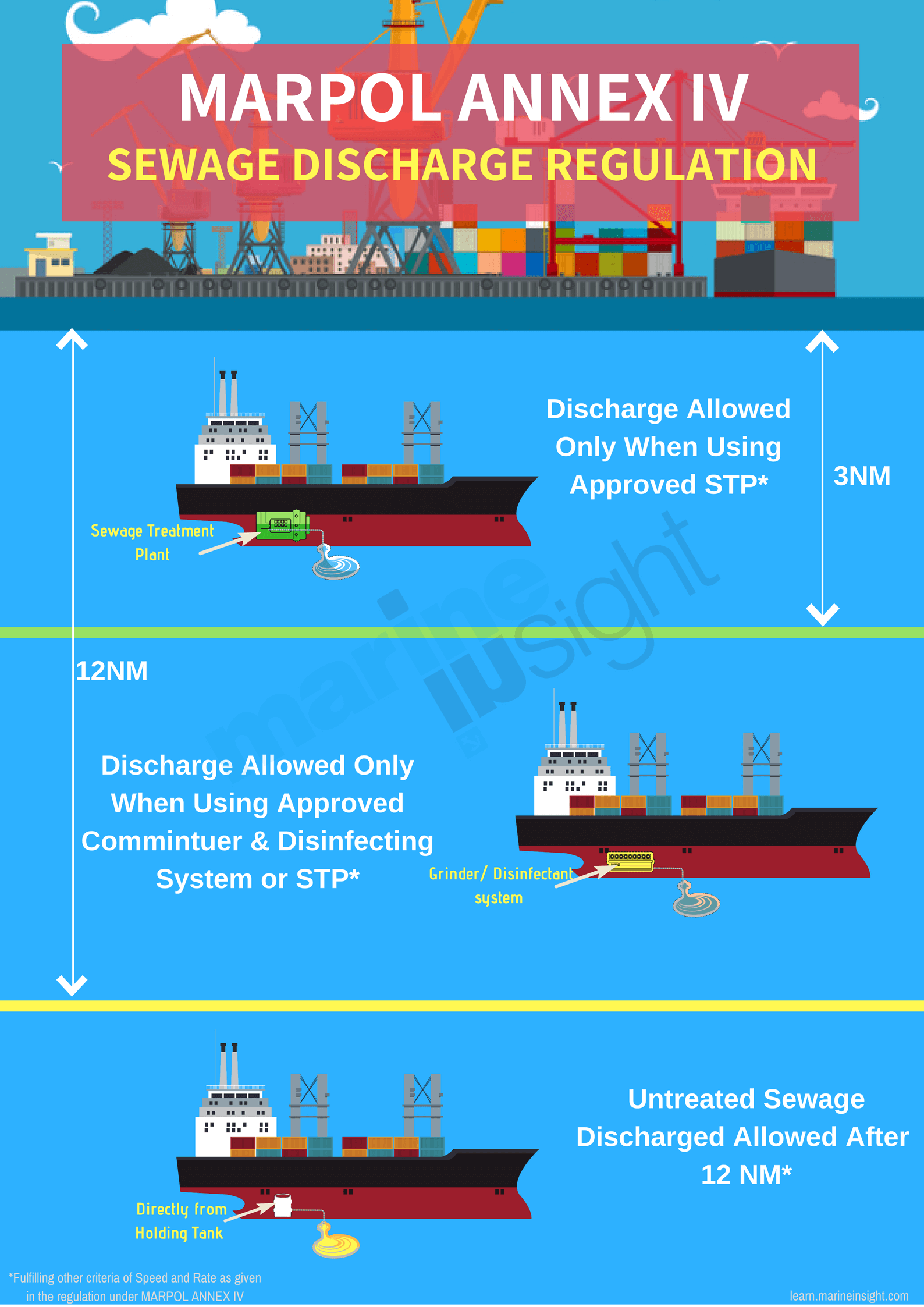
Shortcomings in MARPOL Annex IV Sewage Regulation
– MARPOL Annex IV does not address those vessels carrying fewer persons, which can be ships and ferries plying in domestic waters. However, there are several smaller vessels around which are discharging wastewaters that are not subject to these legal regulations
– Tourism/recreational vessels such as yachts and small boats are also not covered under the MARPOL regulation. In fact, such vessels contribute to a good percentage of marine pollution, especially in countries with a high number of tourists
Arrangement to Treat Sewage On Ships
In all seagoing vessels, special arrangements are installed to hold or treat the sewage (before discharging it), especially in special areas or when the ship nears the coastal areas. Following are the arrangements provided on the ship to hold or treat the sewage:
1. Holding Tank: The holding tank is usually fitted irrespective of the treatment equipment available on the ship. The operation of the ship, its voyage and the total number of crew onboard ships are taken into account to determine the capacity of the sewage holding tank. The holding tank shall have a means to visually indicate the amount of its contents.

2. Comminuting and disinfecting equipment: Ships can have the equipment, which comprises of grinder-cum-filter that breaks the sewage into smaller particles. The filter separates the solids and liquids from the “grinded” sewage. Chemical treatment is done to disinfect the “grinded” sewage sludge (solid), which is then retained in a small tank. The liquid effluent which is separated from the sewage is disinfected using chemicals, which are again filtered using fine filters. The liquid effluent which is free from solids and any bacteria can be re-used for flushing of the toilets. The solid sludge is then given to the shore retention facility.
3. STP: A ship can also be fitted with an approved sewage treatment plant (the most common type uses biological or aerobic digestion based system). The biggest advantage of using STP is that the effluent and treated sewage can be discharged anywhere into high seas .
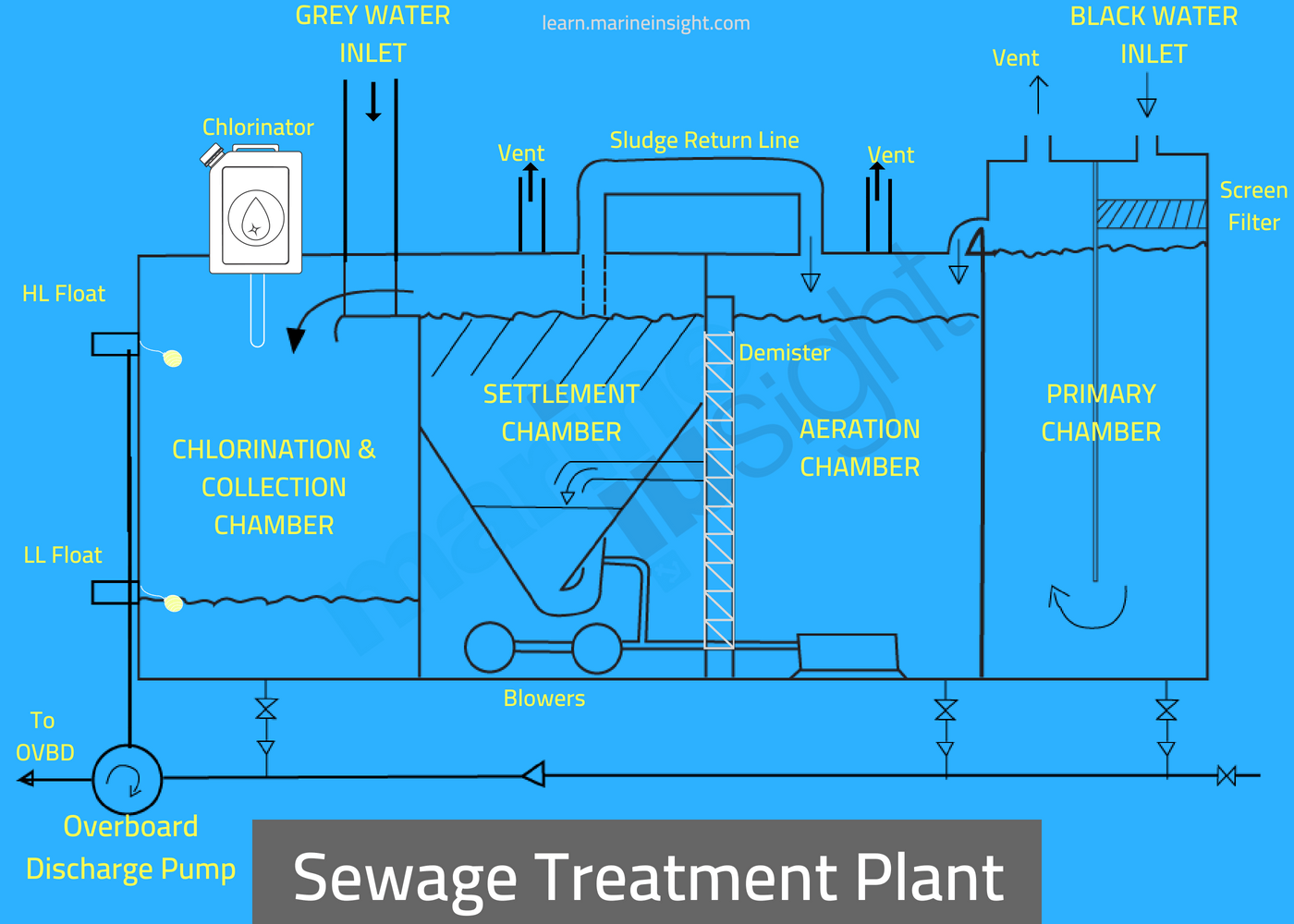
Related Read: Starting and Stopping of Sewage Treatment Plant on a Ship
Most Common Issues With Sewage System:
The ship may be fitted with a sewage holding tank or a sewage treatment plant to comply with the MARPOL Annex IV norms. Following are the most common problems faced by the ships’ crew while using the sewage system:
- Failing of the downstream equipment due to the accumulation of solids, human hair, and other particles/items which are flushed in the toilet
- This debris may also increase the wastage of the internal surface of the pipes, especially at the bends, thus blocking the line
- Frequent chocking of screen filter due to improper operation at the source i.e. in-cabin toilets by throwing papers, rags, plastics, tin etc. in the pot, which is non-biodegradable in nature and a host for the solids to accumulate
- In the case of vacuum plant, loss of vacuum in the system is very common which may happen due to the pipe or valve leakages
- The STP with a vacuum system is provided with ejectors to create a drop in pressure. The ejector pump can become inactive as its nozzle may get blocked, thus hampering the operation
- The sewage pipes, which carry the raw sewage to the holding tank or to the STP are liable to corrosion and wastage. This may lead to getting stuck, affecting the whole operation of the sewage system
- The biological plant or aerobic digestion based system operates due to the presence of bacteria, which helps in decomposing the raw sewage. If proper care is not taken, for e.g the blower is not providing air or chemical or an unapproved cleaning agent is used in the cabin toilet, it may lead to the killing of the bacteria
- The discharge pump is fitted with level sensors, which autostart or stops the pump at the appropriate level. The mechanical level controller tends to face issues as solids and debris will collect over the float, making it inoperational and not allowing the pump to start or stop
- If the chamber is not properly maintained, it may generate a foul smell (similar to rotten eggs), indicating the tank is turning anaerobic
- Before discharging the “treated” effluent from the sewage treatment plant, it is disinfected in the chlorinating chamber. Usually, it is either done by a dosing pump connected to the chlorine tank or manually dosing by using chlorine tablets. This can be overlooked sometimes, leading to a decrease in the chlorine content of the effluent. Typical chlorine levels at discharge are 5 ppm.
Related Read: Maintenance and Checks for Sewage Treatment Plant on Ship
One of the biggest reasons for the problem in the sewage treatment plant is “an untrained crew”. It may happen that some of the crew members had experienced only of holding tanks from there previous ships and the current ship has a biological STP.
The master should ensure all the ship staff is trained on do’s and don’t of using the toilet (for e.g., not putting any non-biodegradable things, not cleaning the toilets with unapproved chemicals or washing powders etc.)
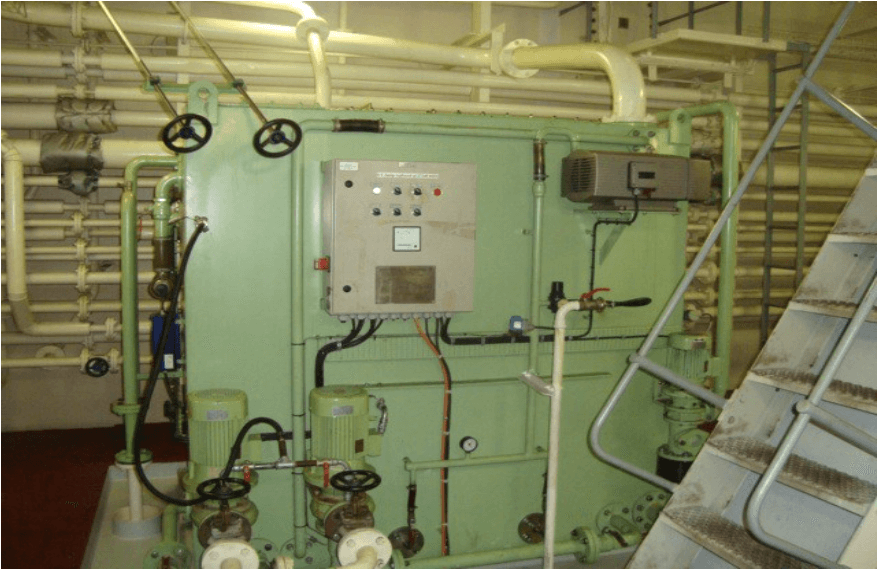
What PSC inspects in sewage system?
Whenever a ship arrives in a port, an inspector representing the port state may inspect the ship for any deficiency. The most targeted area by any PSC authority is the ship’s pollution prevention system, which also includes the sewage system.
The PSC surveyor may check the following things:
1. STP is operated correctly by the ship’s crew 2. All the crew members know the international and local regulations 3. The sewage discharge valve is shut and sealed/locked in the port 4. The internal chamber of STP is clean (no sign of metal wastage) 5. The safety management system onboard includes the steps for regular checks and maintenance of the sewage plant 6. The chlorine content in the effluent can be checked 7. Log of opening and closing of the discharge valve 8. The validity of the International Sewage Pollution Prevention Certificate
Related Read: Top 10 Things Port State Control Inspector Can Check in the Engine Room
Those ships which are not fitted with sewage treatment plant do have a holding tank as a minimum requirement under MARPOL.
With a period of time, the tank will mostly have solid sludge which needs to be disposed at the shore. This is done by using international discharge connection (for sewage, sludge and bilge) from the ship-to-shore reception facility. A pipeline from the holding tank is provided to the connection with an isolating valve.
The dimension of a standard discharge connection is as follows:
Outer Diameter (OD) – 215mm,
Pro Circle Diameter (PCD) – 183mm
Thickness – 20mm
Six 22Ø holes for six 20Ø bolts with suitable length.
You might also like to read:
- Sewage Treatment Plant on Ships Explained
- 4 Important Terms Related to Sewage Treatment Plant on Ships
- Safety of Life at Sea (SOLAS); The Ultimate Guide
- MARPOL Annex 1 Explained: How To Prevent Pollution From Oil At Sea
- MARPOL (The International Convention for Prevention of Marine Pollution For Ships): The Ultimate Guide

A Beginners Guide To Maritime Law
- Maritime principles and regulations for International trade
- Important for shipping companies, seafarers and shore staff
- Read Instantly
- 2 FREE Bonuses
- Guaranteed For 30 Days
Disclaimer : The information contained in this website is for general information purposes only. While we endeavour to keep the information up to date and correct, we make no representations or warranties of any kind, express or implied, about the completeness, accuracy, reliability, suitability or availability with respect to the website or the information, products, services, or related graphics contained on the website for any purpose. Any reliance you place on such information is therefore strictly at your own risk.
In no event will we be liable for any loss or damage including without limitation, indirect or consequential loss or damage, or any loss or damage whatsoever arising from loss of data or profits arising out of, or in connection with, the use of this website.

Do you have info to share with us ? Suggest a correction

About Author
Raunek Kantharia is a marine engineer turned maritime writer and entrepreneur. After a brief stint at the sea, he founded Marine Insight in 2010. Apart from managing Marine Insight, he also writes for a number of maritime magazines and websites.
Read More Articles By This Author >
Daily Maritime News, Straight To Your Inbox
Sign Up To Get Daily Newsletters
Join over 60k+ people who read our daily newsletters
By subscribing, you agree to our Privacy Policy and may receive occasional deal communications; you can unsubscribe anytime.

BE THE FIRST TO COMMENT
Reminders to Master,officers and crew onboard- never use toilet cleaning chemicals that kills Aerobic Bacteria..Aerobic Bacteria helps to digest solid sewage wastes…
What does the regulation say in regards to extended anchorage periods,as we cant discharge even treated sewage overboard,and holding tanks cant store more than 10days in most ships.
Is there a ratio of size in gallons to waste before treatment, to waste after treatment? If a cruise ship is carrying 3000 passengers & crew for 7 days. Is there a ratio of their waste collected to what is there after treatment? How much is the waste reduced?
Where does MARPOL say that sewage treated by approved type STP cannot be discharged at port? Between point 1.1 and 1.2 of “Regulation 11 – Discharge of sewage” there is OR present so discharge is allowed when sewage is comminuted and disinfected 3 miles away from shore OR ship is fitted with approved type STP Some authorities though may say not to do that on their land (like in Great Lakes) but in general there is no such a rule so PSC surveyor rarely can check if sewage discharge valve is sealed. PLEASE COMMENT THIS
1. As per MARPOL Annex IV, Grey waters are not part of sewage, as stated in section “Defining sewage waste”; and
2. As correctly commented by joozwa above, there is not any provision in MARPOL Annex IV, prohibiting the discharge of TREATED (by an approved STP) sewage at ports or within 3 n.m from nearest land.
What usually happened to a ship that caught discharging sewage while at port
Please provide a reference for the diagram of comminuting and disinfecting system. I have never seen such a system in the marine industry.
Leave a Reply
Your email address will not be published. Required fields are marked *
Subscribe to Marine Insight Daily Newsletter
" * " indicates required fields
Marine Engineering
Marine Engine Air Compressor Marine Boiler Oily Water Separator Marine Electrical Ship Generator Ship Stabilizer
Nautical Science
Mooring Bridge Watchkeeping Ship Manoeuvring Nautical Charts Anchoring Nautical Equipment Shipboard Guidelines
Explore
Free Maritime eBooks Premium Maritime eBooks Marine Safety Financial Planning Marine Careers Maritime Law Ship Dry Dock
Shipping News Maritime Reports Videos Maritime Piracy Offshore Safety Of Life At Sea (SOLAS) MARPOL
WAIT! Did You Download 13 FREE Maritime eBooks?
Sign-up and download instantly!
We respect your privacy and take protecting it very seriously. No spam!

- Loss Prevention
- Maritime Health

Investigation into shipyard fire reveals major safety violations
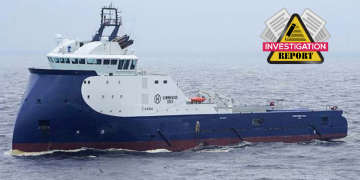
UK MAIB Investigation: Serious injury onboard vessel Kommandor Orca

Curfew and unrest disrupt New Caledonia port operations
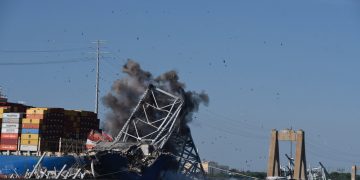
US DOJ files over $100million lawsuit against Dali operators
- Intellectual

Free physiotherapy videos launched to promote seafarer health and safety

Britannia: Tips on the use of social media onboard

Book Review: ECDIS passage planning and watchkeeping

Mindful Living: Daily tips for being in the present moment
- Green Shipping
- Ship Recycling
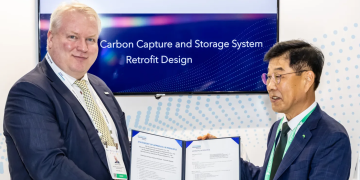
Multi-party effort receives approval for its OCCS design
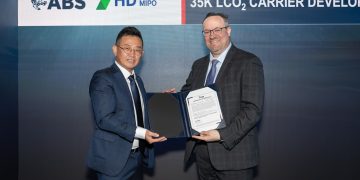
ABS approves of LCO2 containment system
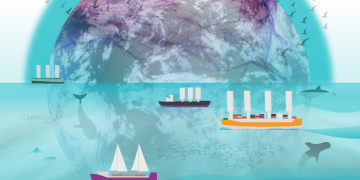
Seas at Risk: Drastic change is needed to decarbonize shipping
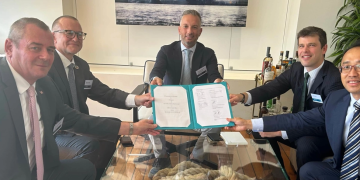
Industry giants to collaborate on ammonia container ship
- Connectivity
- Cyber Security
- E-navigation
- Energy Efficiency
- Maritime Software
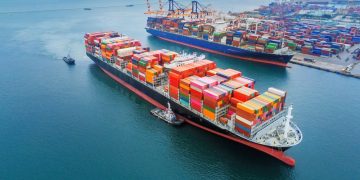

DCSA: Digitalization enhances satisfaction and efficiency

Christopher J. Wiernicki: AI is going to reshape everything in maritime
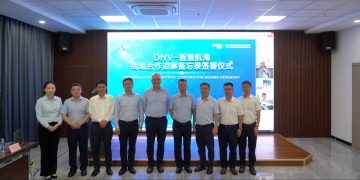
New deal aims to enhance situational awareness and automation
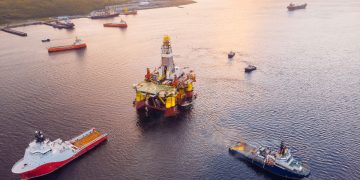
White paper highlights urgent need for data standardisation in offshore sector
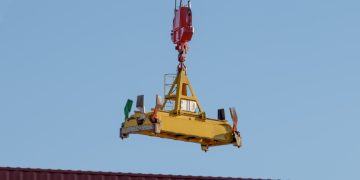
Compliance with Ships’ Lifting Appliances: A best practice guide
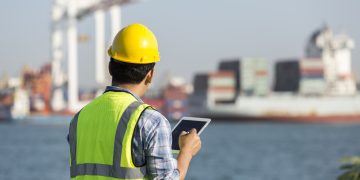
SIRE 2.0 inspection program goes live
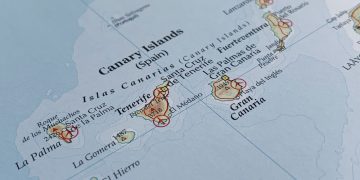
Intoxicated captain gets fined in the Canary Islands
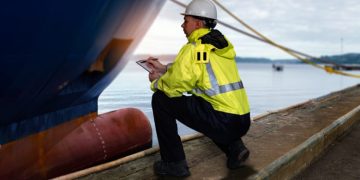
Riyadh MOU launches CIC on ship lifting appliances and loose gear
- Diversity in shipping
- Maritime Knowledge
- Sustainability
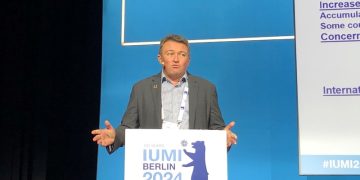
IUMI: Marine insurance cargo market shows sustained improvement

STAR Capital led consortium acquires V Group
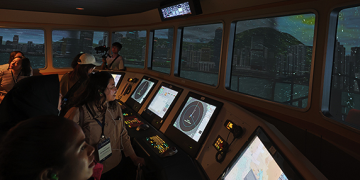
Women maritime leaders undergo training at IMO
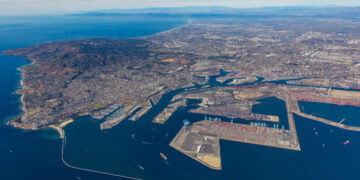
Port of Los Angeles breaks cargo handling record
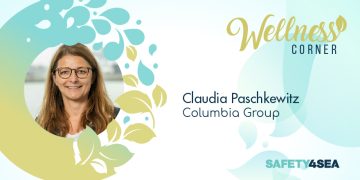
Wellness Corner: Claudia Paschkewitz, Columbia Group
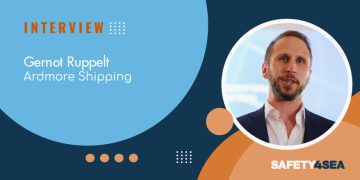
Ardmore Shipping: Seafarers are at the forefront of where energy efficiency truly matters

High-quality case management for ill crew: A West Nile virus case study
Trending tags.
- Book Review
- Career Paths
- Human Performance
- Industry Voices
- Maritime History
- Regulatory Update
- Seafarers Stories
- Training & Development
- Wellness Corner
- Wellness Tips

Requirements for MARPOL Surveys for All Yachts
The republic of the marshall islands issued notice to address the procedures and documentation requirements for rmi flagged yachts to obtain and maintain certification in accordance with the requirements of marpol annexes i, iv, v, and vi..
For the purposes of the MARPOL Annexes IV and V, if the applicability of a requirement is determined by the number of persons carried on board, the number shown on the Cargo Ship Safety Equipment Certificate (supplement) or the Passenger Ship Safety Certificate shall be used as such figure. If the vessel does not hold either of these certificates the figure shall be determined by the number of persons for whom permanent overnight accommodations can be provided.
In accordance with the RMI Yacht Code (MI-103) and Chapter VII Section 2(L) of the MI-100 , all RMI flagged yachts must comply with all applicable statutory requirements.
All yachts of 400GT and above must carry out Initial, Annual, Intermediate, and Renewal Surveys and maintain certificates and records for MARPOL Annex I (Regulations for the Prevention of Pollution by Oil), including Regulations 15, 17 and 37.
Related News
Marshall islands: increase in deficiencies related to isps code, imo: global project to reduce marine plastic pollution extended until 2025.
Yachts of 400GT and above and those certified to carry more than 15 persons, regardless of tonnage, must carry out Initial and Renewal Surveys and maintain certificates for MARPOL Annex IV (Regulations for the Prevention of Pollution by Sewage from Ships).
All yachts must maintain compliance with MARPOL Annex V (Regulations for the prevention of pollution by garbage from ships). Those of 400GT and above and those certified to carry 15 or more persons, regardless of tonnage, shall maintain a Garbage Record Book.
All yachts of 100GT and above and those certified to carry 15 or more persons, regardless of tonnage, shall carry a Garbage Management Plan. Refer to section 4.2 of RMI Marine Notice 2-013-5 for details.
All yachts of 400GT and above must carry out Initial, Annual, Intermediate, and Renewal Surveys and maintain certificates and records for MARPOL Annex VI (Regulations for the Prevention of Pollution by Air), including the Regulation 22 of Annex VI referencing the Ship Energy Efficiency Management Plan (SEEMP).
All yachts, regardless of gross tonnage shall comply with the requirements of MARPOL Annex VI regulation 13 referencing the certification of each marine diesel engine with a power output of more than 130 kW installed and/or which undergoes or is undergoing a major conversion, on or after 1 January 2000.
Subject to regulation 3 of MARPOL Annex VI, in an emission control area designated for Tier III NOX control under paragraph 6 of regulation 13, the entry into force of amendments to regulation 13 setting forth revised standards in paragraph 5.1.1 for the operation of a marine diesel engine that is installed on a ship in accordance with paragraph 5.1.2, shall not apply to:
- a marine diesel engine installed on a yacht with a length, as defined in regulation 1.19 of MARPOL Annex I, of less than 24 meters when it has been specifically designed, and is used solely, for recreational purposes; or
- a marine diesel engine installed on a ship with a combined nameplate diesel engine propulsion power of less than 750 kW if it is demonstrated, to the satisfaction of the RMI Maritime Administrator (the “Administrator”), that the ship cannot comply with the standards set forth in paragraph 5.1.1 of regulation 13 because of design or construction limitations of the ship; or
- a marine diesel engine installed on a yacht constructed prior to 1 January 2021 of less than 500 GT, with a length, as defined in regulation 1.19 of MARPOL Annex I, of 24 meters or over when it has been specifically designed, and is used solely, for “recreational purposes.”
Please click below to read the Notice
Source: RMI

Sulphur content of fuel oil within Chinese ECAs
Drewry: service reliability falls to 12-month low.
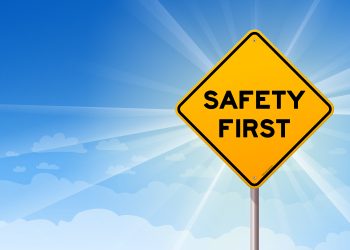
RMI: Exercise caution when handling steel plates
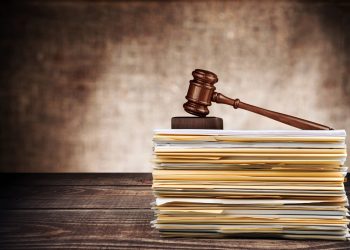
Captain pleads guilty to deliberate pollution
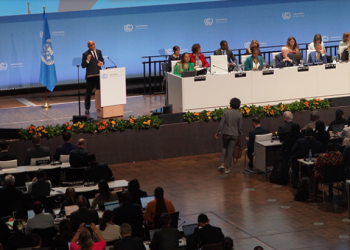
IMO presents decarbonization plan at Bonn Climate Conference
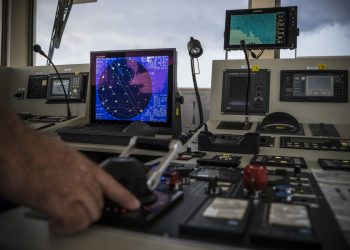
USCG issues guidance on maneuvering devices for safe navigation

Updated Environmental Crime Directive to enter into force on 20 May
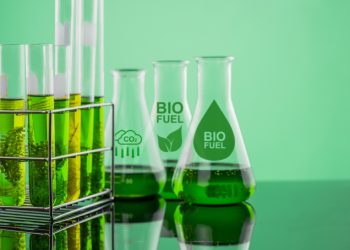
ABS: The IMO and EU regulatory framework for marine biofuels
What kind of ships documentation do yacht owners receive when they take delivery of a new yacht? I assume there’s a pile of maintenance and operational manuals that manufacturers provide for their systems, but who is responsible for the production of the general ship’s operations and safety manuals? Is this something the ship builder provides, or does the owner hire a consulting architect\surveyor\engineer to work with the ship builder to document?
I appreciate your website as you show more behind the scenes information on ship builders and the many people responsible for various aspects of yacht design, building, purchasing and outfitting.
Leave a Reply Cancel reply
Your email address will not be published. Required fields are marked *
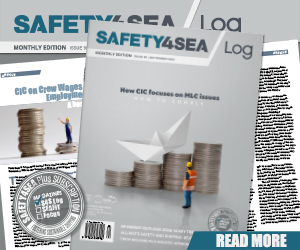
Explore more

- SAFETY4SEA Events
- SAFETY4SEA Plus Subscription
Useful Links
- Editorial Policies
- Advertising
- Content Marketing
© 2021 SAFETY4SEA
- PSC Case Studies
- Tip of the day
- Training & Development
MARPOL overview for beginners – 15 min summary
Introduction.
MARPOL stands for Marine Pollution. It is the main international convention that addresses the different types of pollution from ships operating around the world. It also covers fixed and floating platforms to some extent.
In this article, we explore MARPOL to get a brief overview of its rules and regulations. But before we begin, let us first understand the scope of MARPOL.
International Convention for the Prevention of Pollution from Ships (MARPOL)
The International Convention for the Prevention of Pollution from Ships is the official name for Marpol. It is an instrument of the International Maritime Organization (IMO). The convention includes regulations aimed at eliminating or minimizing pollution of the marine environment from ships.
Pollution can happen as both accidental pollution or from routine operations. As a result, Marpol sets out clear guidelines and regulations to prevent pollutants such as oil, sewage, harmful cargo, garbage, etc. from ending up in water bodies.
The MARPOL regulations are in six separate annexes, each of which addresses a different pollutant. These annexes are as follows:
- Annex I – Regulations for the Prevention of Pollution by Oil
- Annex II – Regulations for the Control of Pollution by Noxious Liquid Substances in Bulk
- Annex III – Prevention of Pollution by Harmful Substances Carried by Sea in Packaged Form
- Annex IV – Prevention of Pollution by Sewage from Ships
- Annex V – Regulation for preventing pollution by Garbage from Ships
- Annex VI – Prevention of Air Pollution from Ships
Annex I – Regulations for the Prevention of Pollution by Oil (entered into force 2 October 1983)
Oil constitutes the largest risk to marine environments. There have been many massive oil spills in history such as the Persian Gulf War oil spill of 1991 (Intentional and up to 520 million barrels) and BP’s Deepwater Horizon oil spill of 2010 (Accidental pollution up to 206 million gallons).
But the majority of incidents still occur through ships. By building immanent barriers in the loading, transportation, discharge, and use of oil, we can minimize pollution to a large extent. With this objective in mind, Annex I entered into force in 1983.
It consists of 39 regulations divided into seven chapters. These chapters are as follows.
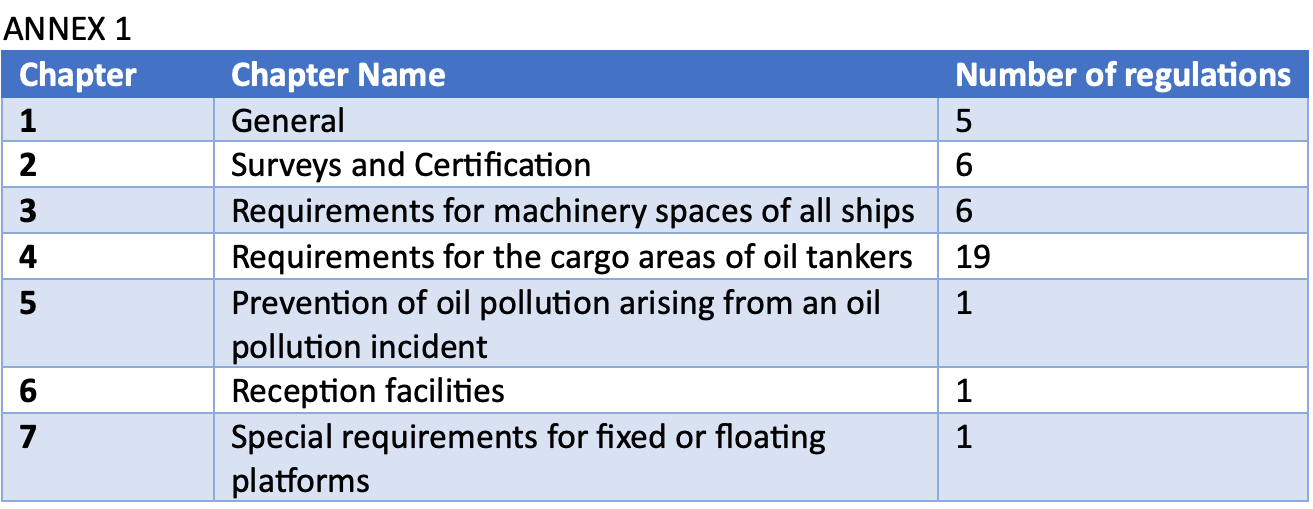
Chapter 1 – General
The first chapter focuses on orientation topics such as definitions, applications, exceptions and exemptions to Annex I.
It also defines Special Areas for Annex I. Special areas are areas where the restrictions on oil discharge are stricter than other areas. This could be because of them being landlocked or other geological, ecological or traffic conditions.

Chapter 2 – Surveys and Certification
Chapter 2 focuses on providing instructions for surveys and certifications. The aim is to ensure that vessel specifications are in line with the requirements of this annex as applicable. Once the surveys are done, the vessel receives an International Oil Pollution Prevention Certificate (IOPP).
Chapter 3 – Requirements for machinery spaces of all ships
The third chapter lays down the regulations for the construction and equipment in machinery spaces with respect to this annex. It gives the details about sludge tanks, fuel oil tanks, their capacities, piping arrangement overboard as well as the standard flange requirements to connect to reception facilities.
The fuel oil tank design requirements have been recently added as regulation 12A to this chapter for tanks that have a capacity of more than 600 cubic metres.
It also explains how and what needs to be recorded when pumping out allowable concentrations of oil through approved oil filtering equipment.
The Chapter also explains the conditions when the discharge of oil into the sea is allowed and the use of Oil Record Book Part 1 to record the same.
Chapter 4 – Requirements for the cargo areas of oil tankers
Chapter four discusses similar regulations for the construction and equipment of cargo areas of oil tankers. It standardizes segregated ballast tanks, double hulls, double bottoms, pump rooms, slop tanks, pumping, piping and discharge arrangements.
It also discusses cargo equipment such as Oil Discharge and Monitoring Control System (ODMCS), Oil/water interface detector and Crude Oil Washing requirements (COW).
The chapter also expands on topics such as the oily mixture discharge procedure at sea, crude oil washing operations and the use of Oil Record Book Part – II.
Chapter 5 – Prevention of oil pollution arising from an oil pollution incident
Chapter 5 mandates the possession of a Shipboard Oil Pollution Emergency Plan (SOPEP) for all ships > 400 GT ( > 150 GT in the case of oil tankers)
It also states the IMO’s guidelines on how to develop it and, if required, how to merge it with the Shipboard Marine Pollution Emergency Plan (SMPEP).
Chapter 6 – Reception facilities
This chapter specifies the location, distribution and capacity of shore reception facilities for oil residues. It also gives some additional regulations for shore reception in Special areas.
Chapter 7 – Special requirements for fixed or floating platforms
The last chapter provides guidelines for platforms such as drilling rigs, FPSOs, and FSUs for the storage of produced oil.
These platforms should also have sufficient sludge tanks and functional oil-filtering equipment. They must also maintain a record of all operations involving oil or oily discharge mixtures in an approved format.
Annex II – Regulations for the Control of Pollution by Noxious Liquid Substances in Bulk (entered into force 2 October 1983)
Marpol annex II came into force along with Annex I. The second annex focuses on noxious liquid substances carried on ships. Such substances pose a significant danger to the marine environment and need to be regulated to control pollution and ensure environmental protection.
Marpol annex II consists of 18 regulations divided into 8 chapters.
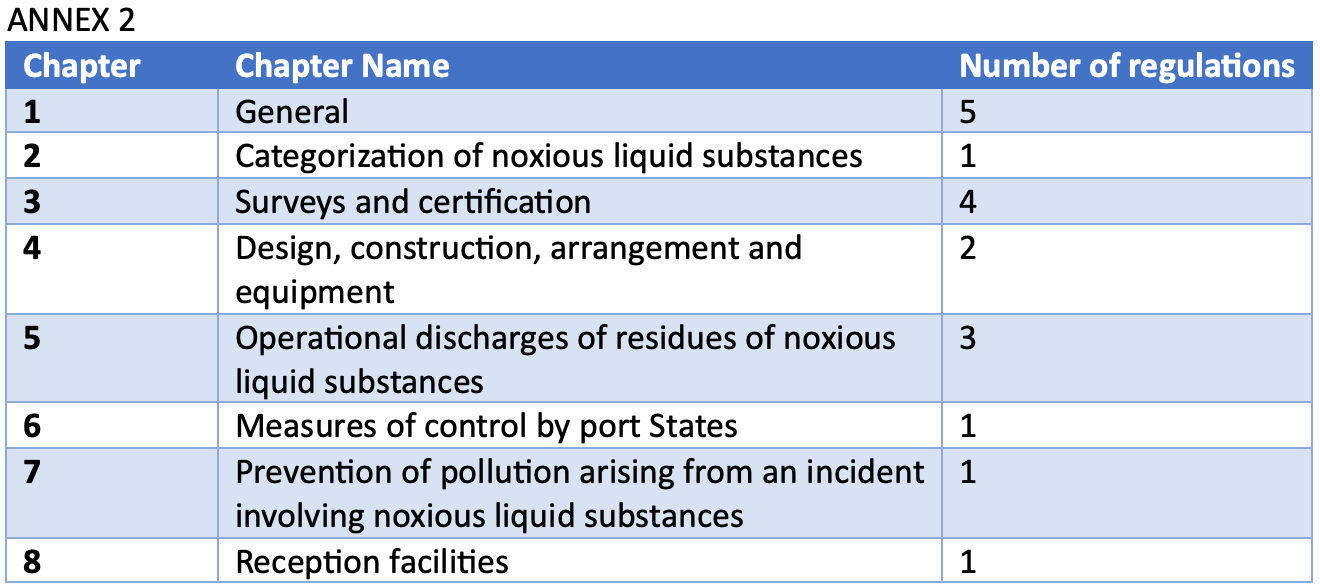
Similar to Chapter 1 in the previous annex I, this chapter discusses orientation topics such as definitions, applications, exception and exemptions related to Marpol annex II.
Chapter 2 – Categorization of noxious liquid substances
The proposed regulations had an appended list of about 250 noxious liquid substances that vessels could only dispose to reception facilities unless below a certain threshold of concentration and other conditions. The noxious substances have four categories: X, Y, Z, and other substances (OS).
Other substances are substances that do not fall into any of the previous categories as per the International Bulk Chemical Code (Chapter 18 – Pollution category column).
Chapter 3 – Surveys and certification
Chapter 3 informs that all chemical tankers are to be surveyed and certified periodically as per the International Bulk Chemical Code (IBC). Surveys include initial, renewal, intermediate, annual and additional surveys.
Upon a successful survey, the International Pollution Prevention Certificate for the Carriage of Noxious Liquid Substances in Bulk whose validity shall not exceed five years.
Chapter 4 – Design, Construction, Arrangement and Equipment
The fourth chapter provides provisions for the design, construction, arrangement and equipment of vessels certified to carry noxious liquid substances in bulk. These are meant to reduce the possibility of their uncontrolled discharge into the sea.
It also sets standards for how much residues of these substances can be retained in tanks and associated piping.
Chapter 5 – Operational discharges of residues of noxious liquid substances
Chapter 5 stipulates the provisions and standards for the discharge of noxious liquid substances into the sea. It also provides the arrangements and procedures onboard for correct cargo handling, tank cleaning, slops handling, cargo tank ballasting and deballasting.
And finally, the chapter also speaks about the Cargo Record Book and the importance and method of filling it in the correct format.
Chapter 6 – Measures of Control by port states
This chapter states the extent of control awarded to port states to ensure that vessels are adhering to the annex requirements.
Chapter 7 – Prevention of pollution arising from an incident involving noxious liquid substances
This chapter mandates that vessels that are certified to carry the substances in this annex must have onboard an approved Shipboard Marine Pollution Emergency Plan (SMPEP). The plan must give a detailed procedure on what to do in the case of a pollution incident.
It would also guide the ship staff with who to contact and what to tell them so that effective action can be taken to minimize pollution.
Chapter 8 – Reception facilities
The final chapter of the annex allocates the responsibility to member states of providing capable and adequate shore reception facilities at their cargo handling terminals/ports and ship repair ports for the safe discharge of these substances.
Annex III – Prevention of Pollution by Harmful Substances Carried by Sea in Packaged Form (entered into force 1 July 1992)
Marpol annex III covers harmful substances that are defined as marine pollutants in the IMDG code. IMDG stands for the International Maritime Dangerous Goods Code.
This annex consists of 8 regulations that cover the different aspects of a harmful substance from packing to stowage to how much can be carried at a time.

Regulation 1 – Application
Regulation 1 covers the application of this annex to the shipping industry. It prohibits the carriage of harmful substances except when the activity complies with the requirements of this annex.
The regulation also instructs the member states to provide exhaustive instructions on packing, marking, labelling, documentation, quantity limits and any exceptions.
It urges that the packaging used for these substances themselves be considered harmful substances unless all traces of the substance can be removed.
Regulation 2 – Packing
This regulation only states that packaging choices should be made consciously to minimise the dangers to the environment.
Regulation 3 – Marking and Labelling
Regulation 3 expands on the requirements for packaging. It states that the packages be marked with the correct United Nations or UN number for universal identification. Stickers or graphics that indicate that the substance is a marine pollutant should also be present.
The packaging must also be durable enough to last at least three months of immersion in the sea. Small packages may be exempted from these requirements.
Regulation 4 – Documentation
Regulation 4 urges the vessels to carry comprehensive documentation for the harmful substances along with a signed declaration from suppliers that the packaging is suitable and that it is marked and labelled correctly.
Copies are to be held on the vessels as well as ashore of the final stowage plan showing the location of these harmful substances onboard.
Regulation 5 – Stowage
The stowage and security of these substances onboard must fulfil two conditions in order to be acceptable. These are:
- It must minimize the harm to the environment.
- It must not jeopardize the safety of the persons and the ship itself.
Regulation 6 – Quantity limitations
Certain materials cannot be transported or stowed in large quantities. It is important that these limitations are followed for the safety of crew, ships, terminals and the environment.
The Beirut port explosion of August 2020 is a prime example of how haphazard storage of dangerous cargo can lead to disastrous consequences.
Regulation 7 – Exceptions
The regulation details the conditions under which ships may be excused for not adhering to the annex. For example, it is allowed to drop cargo into the sea if doing so is necessary to secure the safety of a ship or persons onboard.
Regulation 8 – Port state control on operation requirements
This final regulation of Marpol annex III gives authority to port state control to inspect ships where they believe that the ship crew is not familiar with pollution prevention procedures. They may hold the vessel until the situation is rectified to acceptable levels.
Annex IV – Prevention of Pollution by Sewage from Ships (entered into force 27 September 2003)
The fourth annex focuses on sewage from ships. Sewage can be a real problem, especially in closed water bodies such as river channels, lakes and internal seas.
To address this problem, Marpol annex IV prohibits the discharge of sewage into the sea unless it is through an approved sewage treatment plant or comminuted and disinfected to specified limits.
In any case, the sewage is not to be disposed less than three nautical miles from the nearest land and when it is not comminuted or disinfected, the distance requirement increases to 12 nautical miles.
Marpol annex IV consists of 12 regulations that form 4 chapters.

Like previous annexes, the first chapter gives basic information about the annex such as the definitions of the terms used, the application of the annex and exceptions if any.
Chapter 2 – Surveys and certification
This chapter enumerates the surveys necessary to ensure compliance with the annex. It also gives details about the certificates to be issued and their duration and validity requirements.
Chapter 3 – Equipment and control of discharge
The third chapter covers two topics.
The first topic is equipment. This regulation invokes that the sewage equipment such as the sewage treatment plant (STP), sewage holding tank, sewage comminuting and disinfecting system and the discharge connection is of an approved type.
The second topic is discharge controls. The regulation clarifies how the sewage is to be discharged at sea. Some of it relating to discharge distance from nearest land was already discussed at the beginning of this section.
It also gives other criteria such as the speed of the ship, that it should be enroute and the discharge rate. Also, the effluent should not produce discolouration or have visible solids.
Chapter 4 – Reception facilities
The last chapter stresses the need to provide quick and reliable shore reception facilities to the vessels at ports and anchorages.
Annex V – Regulation for preventing pollution by Garbage from Ships (entered into force 31 December 1998)
Garbage is a real menace at sea because it never really goes away. Plastics, in particular, not only degrade marine environment but are extremely harmful to marine organisms.
Annex V was brought into effect to prevent the unfettered discharge of garbage into the sea. It classifies garbage into multiple categories with instructions on how and where each category is to be disposed.
It consists of 9 regulations as follows:

Regulation 1 and 2 are pretty self explanatory by this point.
Regulation 3 – Disposal of garbage outside special areas
This regulation gives information on how we can dispose of the garbage outside special areas. It also gives us a list of garbage types which we cannot discharge at all at sea.
It goes on to specify the types of garbage we can dispose of and beyond what distance to the nearest land. Regulation 4 follows up with special requirements for the same.
Regulation 5 – Disposal of garbage within special areas
Garbage disposal within special areas has more stringent requirements than outside special areas. This regulation informs about those requirements and which special areas have even stricter conditions.

Regulation 6 and 7 – Exceptions and Reception facilities
These regulations note the exceptions to this annex and the need for reception facilities.
Regulation 8 – Port state control on operational requirements
The Port state control has the authority to inspect and detain any vessel that is not familiar with essential shipboard procedures. Article 5 of the present Convention tells us about these procedures.
Regulation 9 – Placards, garbage management plans and garbage record-keeping
This regulation instructs the ship staff to maintain placards, follow the garbage management plan and keep records diligently.
For all vessels greater than 12 m in length, placards are to be displayed in the working language of the ship. If these ships operate in international waters, the placards must also be in either English, French or Spanish.
The vessel must also have a written garbage management plan if the vessel is certified to carry more than 15 passengers or is greater than 400 gross tonnage in size. It must have detailed procedures for the collection, storage, processing and disposal of garbage.
The same vessels are also required to carry a garbage record book which gives sufficient details about incineration or discharge of garbage such as the time, position, garbage type and amount.
Annex VI – Prevention of Air Pollution from Ships (entered into force 19 May 2005)
Air pollution from ships has come increasingly into focus in the past two decades. It emits green house gases and ozone depleting substances that are causing climate change as well as damage to humans and marine environment.
To prevent this, the Organization has enforced many measures. Many others are in development by the Marine Environment Protection Committee of the IMO.
Marpol Annex VI covers air pollution from ships. It consists of 19 regulations in three chapters. The three chapters are as follows:

This chapter consists of orientation topics such as Definitions, Annex VI applications and exceptions.
Chapter 2 – Survey, certification and means of control
This chapter details the different surveys and certifications required to ensure that vessels comply with this annex.
When a vessel complies and passes relevant surveys as mentioned in Regulation 5 of this annex, it receives an International Air Pollution Prevention Certificate (IAPP).
The chapter also states that the vessels are subject to inspections to ensure compliance. If a violation is found, the inspecting Party will forward the inspection report along with the evidence to the Administration.
The Administration will verify the claim and, if required, ask for more or better evidence. Once the violation is clear, the Administration will take action according to its laws and inform the former Party as well as the Organization of the action taken.
Chapter 3 – Requirements for control of emissions from ships
This chapter covers the various air pollutants that ships operating in different parts of the world emit.
The list includes pollutants such as ozone-depleting substances, Nitrogen oxides (NOx), Sulphur oxides (SOx), carbon dioxide and volatile organic compounds.

Most of these compounds originate from marine fuels through marine diesel engines. Therefore, one of the most important reforms of this annex has been to improve the fuel oil quality.
The introduction of operational measures ( CII ) and technical regulatory measures (EEDI/EEXI) have helped set goals for emission reduction.
Exhaust gas cleaning systems have also seen many advances. These systems capture pollutants such as particulate matter before their release into the atmosphere through the exhaust gas. These systems allow the use of heavy fuel oil without restriction as the exhaust gas no longer contains pollutants as before.
Shipboard incinerators also release problematic compounds. Regulation 16 has standardized them to prevent pollution from operational or accidental causes.
The final regulation speaks about exemptions for drilling rigs and platforms in complying with this annex.
- How many technical annexes are there in MARPOL?
Marpol consists of six separate annexes. Each one is for a different pollutant. These are oil, noxious liquid substances in bulk, harmful substances in packaged form, sewage, garbage, and air pollution.
- Can we throw incinerator ash overboard?
We cannot throw incinerator ash overboard. We discharge it to an approved shore reception facility and record the quantity and other details in the Garbage Record Book.
- For how long do vessels maintain Oil Record Book onboard?
Vessels maintain old Oil Record Books onboard for three years after the date of last entry.
- For how long do vessels maintain the Garbage Record Book onboard?
Vessels maintain old Garbage Record Books onboard for two years after the date of last entry.
- Our Approach
- News & Insights
- Ship Management
- Crew Management
- Commercial Services
- [email protected]
- + 91 44 4684 9999
- Privacy Statement

- AMERICA'S CUP
- CLASSIFIEDS
- NEWSLETTERS
- SUBMIT NEWS
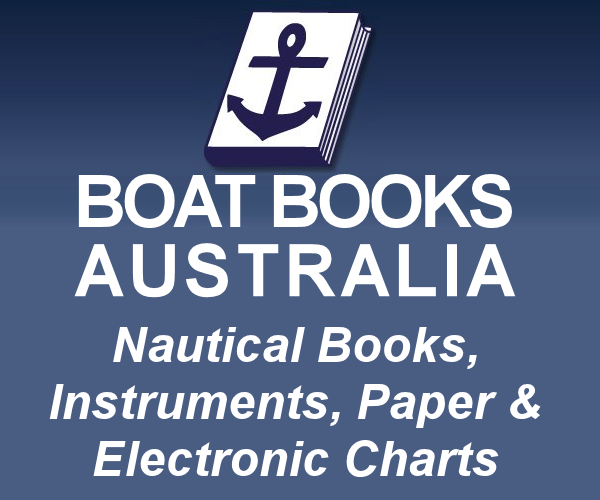
How is your yacht affected by MARPOL rules for Ships?
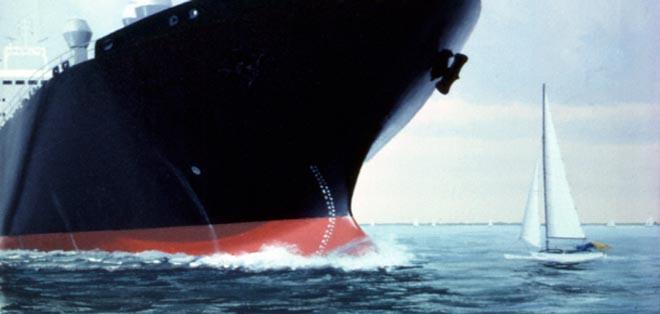
Related Articles
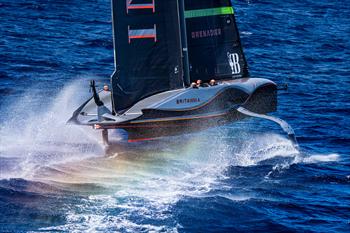

An official website of the United States government
Here’s how you know
Official websites use .gov A .gov website belongs to an official government organization in the United States.
Secure .gov websites use HTTPS A lock ( Lock A locked padlock ) or https:// means you’ve safely connected to the .gov website. Share sensitive information only on official, secure websites.
JavaScript appears to be disabled on this computer. Please click here to see any active alerts .
Vessel Sewage Discharges: Statutes, Regulations, and Related Laws and Treaties
Section 312 of the Clean Water Act (CWA) sets out the principal framework for regulating sewage discharges from vessels into the U.S. navigable waters and is implemented jointly by the U.S. Environmental Protection Agency (EPA) and the U.S. Coast Guard. However, sewage discharges from certain vessels may also be subject to regulation under other federal statutes or international treaties.
Clean Water Act Section 312 (33 U.S.C. 1322)
CWA sections 312(a) – (m) provide the statutory framework under which the EPA and the U.S. Coast Guard regulate sewage discharges from vessels. See Clean Water Act Section 312 ( 33 U.S.C. 1322 (PDF) (10 pp, 170 K) ).
Note on the relationship between CWA sections 312 and 402: Section 301(a) of the CWA provides that "the discharge of any pollutant by any person shall be unlawful" unless the discharge is in compliance with certain other sections of the Act. 33 U.S.C. 1311(a). The CWA defines "discharge of a pollutant" as "(A) any addition of any pollutant to navigable waters from any point source, (B) any addition of any pollutant to the waters of the contiguous zone or the ocean from any point source other than a vessel or other floating craft." 33 U.S.C. 1362(12). A "point source" is a "discernible, confined and discrete conveyance" and includes a "vessel or other floating craft." 33 U.S.C. 1362(14). A person may discharge a pollutant without violating the section 301 prohibition by obtaining a National Pollutant Discharge Elimination System (NPDES) permit under section 402 of the CWA. ( 33 U.S.C. 1342 (PDF) (8 pp, 164 K) ).
Vessel sewage discharges defined in CWA section 312 are excluded from Vessel General Permit (VGP) coverage although certain vessels are required to obtain coverage under EPA's NPDES VGP for discharges incidental to the normal operation of those vessels (see below for information on the VGP). While sewage is defined as a "pollutant" under the CWA, sewage from vessels within the meaning of section 312, is exempt from this statutory definition [33 U.S.C. 1362(6); see also 33 U.S.C. 1322(a)(6) (definition of "sewage")]. Sewage from vessels also includes graywater for commercial vessels operating on the Great Lakes and is also exempt [33 U.S.C. 1322(a)(10) (definition of "commercial vessels" for purposes of section 312)]. Therefore, vessel owners/operators are not required to obtain NPDES permits before discharging sewage. However, vessels discharging graywater and sewage in one effluent stream, and are not otherwise "commercial vessels" under CWA section 312, are required to follow the requirements outlined in CWA section 312 and the VGP.
Implementing Regulations
The EPA regulations implementing CWA section 312 (standards for marine sanitation devices (MSDs)): 40 C.F.R. 140 et seq (PDF) (5 pp, 229 K) .
U.S. Coast Guard regulations implementing CWA section 312 (regulations governing the design, construction, certification, installation and operation of MSDs): 33 C.F.R. 159, Subparts A-D (PDF) (18 pp, 273 K) .
Related Laws and Treaties
Sewage discharges from certain vessels may also be subject to regulation under other Federal statutes and/or international requirements. Examples of these regulations include Title XIV, which applies to certain cruise ships operating in Alaska, and MARPOL Annex IV, which applies if the vessel's flag State is a party to Annex IV. Discharges of graywater and sewage that have been mixed into one effluent stream are also regulated under the NPDES VGP, issued by the EPA pursuant to section 402 of the CWA.
"Title XIV" (33 U.S.C. 1901 Note)
On December 21, 2000, Congress enacted an omnibus appropriation bill that included new statutory requirements for certain cruise ships discharging graywater and sewage in Alaska [Departments of Labor, Health and Human Services, and Education, and Related Agencies Appropriations Act, 2001, Pub. L. No. 106-554, 114 Stat. 2763, enacting into law Title XIV of Division B of H.R. 5666, 114 Stat. 2763A-315, and codified at 33 U.S.C. 1901 (PDF) (7 pp, 154 K) Note ("Title XIV")].
Title XIV did not supersede regulation of sewage discharges from cruise ships under CWA section 312. Rather, Title XIV establishes separate requirements for the discharge of treated sewage and graywater from those cruise ships with capacity for 500 or more passengers and operating in certain waters in Alaska. Like the CWA section 312 program, Title XIV is jointly implemented by the EPA and the U.S. Coast Guard.
Vessel Discharge Permit Program (Vessel General Permit)
Pursuant to section 402 of the CWA, 33 U.S.C. 1342 (PDF) (8 pp, 164 K) , the VGP, finalized by the EPA in 2008, regulates discharges incidental to the normal operation of vessels operating in a capacity as a means of transportation. Recreational vessels as defined in section 502(25) of the CWA are not subject to the VGP. In addition, with the exception of ballast water discharges, non-recreational vessels less than 79 feet (24.08 meters) in length, and all commercial fishing vessels regardless of length, are not subject to the VGP.
The VGP includes:
- general effluent limits applicable to all covered discharges;
- general effluent limits applicable to 26 specific discharge streams;
- narrative water-quality based effluent limits;
- inspection, monitoring, recordkeeping, and reporting requirements; and
- additional requirements applicable to certain vessel types.
Vessel sewage discharges within the meaning of CWA section 312 are excluded from coverage under the VGP. However, as noted above, graywater and sewage discharges mixed into one effluent stream are subject to the permit (except those discharges from "commercial vessels" (as defined at 33 U.S.C. 1322(a)(10)) operating on the Great Lakes). This one effluent stream must meet the discharge limitation requirements in Parts 2 and 5 (if applicable) of the VGP, and any applicable CWA section 312 requirements for sewage discharges.
See Vessel Discharge Permit Program (Vessel General Permit) .
MARPOL Annex IV
The principal international instrument regulating sewage discharges from vessels is Annex IV to the "International Convention for the Prevention of Pollution from Ships, 1973, as modified by the Protocol of 1978 relating thereto" ("MARPOL Annex IV"). The United States is not a party to MARPOL Annex IV, and thus is not bound by the Annex's provisions. However, ocean-going vessels operating in U.S. navigable waters which are registered in foreign countries may be subject to the MAPROL Annex IV requirements.
More information regarding MARPOL Annex IV can be accessed on the IMO website .
- Vessels, Marinas, and Ports Home
- Sewage Discharges
- Commercial Vessel Discharges
- Recreational Vessel Discharges
- Military Vessel Discharges
- Aquatic Nuisance Species
- Cruise Ship Studies
The Federal Register
The daily journal of the united states government, request access.
Due to aggressive automated scraping of FederalRegister.gov and eCFR.gov, programmatic access to these sites is limited to access to our extensive developer APIs.
If you are human user receiving this message, we can add your IP address to a set of IPs that can access FederalRegister.gov & eCFR.gov; complete the CAPTCHA (bot test) below and click "Request Access". This process will be necessary for each IP address you wish to access the site from, requests are valid for approximately one quarter (three months) after which the process may need to be repeated.
An official website of the United States government.
If you want to request a wider IP range, first request access for your current IP, and then use the "Site Feedback" button found in the lower left-hand side to make the request.
Just added to your cart

What Is Marpol and How Does It Affect You
The MARPOL Convention was adopted on 2 November 1973 at the International Maritime Organisation (IMO), which in turn is a division of the UN. The International Convention for the Prevention of Pollution from Ships to give it its full name, lays out regulations aimed at preventing and minimizing pollution from ships - both accidental and from routine operations.

In 1978 a more comprehensive protocol was introduced and merged with the existing one after a number of tanker accidents in 1976-1977. Further protocols were added and amendments made over the years with the addition of Annex VI which entered into force on 19 May 2005. Currently Marpol includes six technical annexes that each look at specific areas of concern. These annexes are:
Important to note is that Marpol applies to all vessels both commercial and leisure with there being some more stringent regulations for larger vessels, particularly over 400 gross tonnes, soon to be reduced to 100 gross tonnes. Annex V in particularly is applicable to all vessels. It covers garbage prohibiting the discharge of all garbage and discharge into the sea, with some notable exceptions including cleaning products so long as they are considered not harmful to the marine environment.

It has been known for the authorities in marinas to come aboard and check which cleaning products are on board and whether they are suitable and Marpol compliant. There has also been testing of the water around boats to see what chemicals from products are in the ocean and boats have been fined when traces of unsuitable cleaning agents have been found in the water.
How then can you ensure that you do not fall foul of the Marpol regulations and are using compliant products. It starts by understanding the regulations themselves which are not particularly well known within the yachting community despite their relevance and importance. This is in part because in the past they have not been particularly well enforced. However, this is changing. It’s also worth noting that within the UK, they have informed the UK’s Marine Guidance Note: Pleasure Vessels - UK Regulations applicable to all UK registered vessels and vessels in UK waters.
To review, the Marpol Regulations specific clause around cleaning products states:
1.7.4 While cleaning agents and additives contained in hold washwater and deck and external surface washwater are considered "operational wastes" and thus "garbage" under MARPOL Annex V, these cleaning agents and additives may be discharged into the sea so long as they are not harmful to the marine environment.
1.7.5 A cleaning agent or additive is considered not harmful to the marine environment if it:
- is not a "harmful substance" in accordance with the criteria in MARPOL Annex III; and
- does not contain any components which are known to be carcinogenic, mutagenic or reprotoxic (CMR).
1.7.6 The ship's record should contain evidence provided by the producer of the cleaning agent or additive that the product meets the criteria for not being harmful to the marine environment. To provide an assurance of compliance, a dated and signed statement to this effect from the product supplier would be adequate for the purposes of a ship's record. This might form part of a Safety Data Sheet or be a stand-alone document, but this should be left to the discretion of the producer concerned.
The wording above can be seen as unclear and too vague and we agree. It needs to, and likely will be tightened up over the coming years. However, essentially to be in compliance with Marpol Annex V 1.7.5 only cleaning products that do not contain ingredients considered to be harmful to aquatic life can be used on board.
That seems to be easier said than done though. A recent study we recently commissioned of leading yacht wash products found that out of 11 yacht wash products, eight contained ingredients that are harmful to aquatic life, two had undetailed or incomplete SDS and only Ecoworks ecoYacht Wash could be categorically said not contain any ingredients considered harmful to aquatic life. Ecoworks ecoYacht Wash was the only product that complied with Marpol.
This then leaves you with the question of which products are compliant. An Ecocert, Ecolabel or equivalent is a great sign that the product is making efforts to meet sustainable credentials. However it has to be said that we have found certified products that contain ingredients harmful to marine life.
The best way currently to ensure that you are using products that are safe for the environment and compliant with Marpol is to check the Safety Data Sheet (SDS) which can often be found online on the brands website and must be provided by law by the company on request. All our Safety Data Sheets for example, can be found under each product on our website. It is good practice to have the SDS of the products you’re using on board readily available in case of inspection. This will help authorities quickly ascertain whether the boat is abiding Marpol regulations.
To quickly ascertain in the SDS whether the product is safe, look out for hazard warning codes that can be found in section 3 under the composition and information on ingredients. Particular codes to look out for are H400, H401, H410, H411, H412, H413 and H420. These warning codes all tell you that the product contains an ingredient known to be harmful to aquatic life to some degree. To understand more about Safety Data Sheets you can read our on demystifying Safety Data Sheets blog which breaks down what safety data sheets are and how to read them.

In the past Marpol has been poorly enforced and the degree to which it is enforced varies massively between different countries' waters. As a result it has been easy to not worry about or even ignore the regulations as a small superyacht or pleasure vessel. Technically speaking currently, any violation of the MARPOL 73/78 Convention within the jurisdiction of any country signed up to the convention is punishable either under the law of that country or under the law of the flag State. Even at sea though, if the relevant certificates are failed to be shown or the ship is suspected of not adhering to Marpol, the inspecting authority can detain the ship until it is satisfied that the ship can proceed to sea without presenting unreasonable threat of harm to the marine environment.
As the public and governments become more aware of the environment and start to react, governments and authorities will start to enforce Marpol more effectively and it's already happening. Furthermore regulations are also likely to be tightened up and improved upon with new regulations already due to be added to Marpol in 2024.
As the authorities start to clamp down on and implement Marpol regulations, it is becoming increasingly risky for yacht owners and operators to ignore Marpol regulations, particularly for charter yachts. Some of the simpler rules are very easy to implement, store garbage on board, do not flush grey and black water into the ocean and use marine safe cleaning products. You can read the entire Marpol regulations here .
Hopefully this article has helped a little on Annex V but if requested we’re happy to do a more detailed look into a simplified breakdown of the Marpol regulations.
- Share Share on Facebook
- Tweet Tweet on Twitter
- Pin it Pin on Pinterest
- Choosing a selection results in a full page refresh.
- Press the space key then arrow keys to make a selection.
International Convention for the Prevention of Pollution from Ships
The International Convention for the Prevention of Pollution from Ships (MARPOL) was adopted on 2nd November 1973 at IMO, and later updated in 1978 after numerous severe tanker accidents. It applies to:
- all ships with the flag of a State member of the Convention, or that operate within its jurisdiction
- vessels of any type, operating in the marine environment including hydrofoil boats, air-cushion vehicles, submersible, floating craft and fixed or floating platforms.
Regulatory Focus
MARPOL 73/78 has actually six technical Annexes, each addressing a potential source of pollution from ships:
- Oil pollution (crude oil, fuel oil)
- Noxious liquid substances carried in bulk pollution
- Harmful substances carried in packaged form pollution
- Sewage pollution
- Garbage pollution
- Air pollution
Deliverables
The main certificates a vessel shall carry to show compliance with MARPOL Annexes are:
- IOPP (International Oil Pollution Prevention Certificate)
- ISPP(International Sewage Pollution Prevention Certificate)
- IAPP(International Air Pollution Prevention Certificate)
- NLS (International Pollution Prevention Certificate for the Carriage of Noxious Liquid Substances).
RINA performs plan approval, initial and periodical surveys, and, when delegated, issues the relevant certificates on behalf of the Flag Administration.
RINA is authorized to act on behalf of more than 110 Flag Administrations, to inspect and certify vessels compliance with MARPOL requirements. We have always been committed to environment protection with a wide range of services, additional class notations and software tools to enhance vessels’ environmental performance, and supporting the voluntary anticipated adoption of upcoming environmental regulations.
Do ships under 400 GT have to comply with MARPOL Annex VI? Yes. The regulations of MARPOL Annex VI apply to all ships, except where expressly provided. This means that even though the ship may not need an IAPP Certificate due to its tonnage, the regulations still have to be complied with.
Is it possible to perform MARPOL verifications at the same time as other statutory activities? Yes, the Harmonized System of Survey and Certification (HSSC) allows statutory surveys for different certificates to be carried out at the same time.
Are amendments to MARPOL retroactive? Yes, they’re based on the Keel Laying date of the vessel, some amendments are applicable to existing ships.
You may also like
Gas as a fuel.
Environmental Indexes
Seemp support.

IMAGES
VIDEO
COMMENTS
This deals with sewage. It is applicable to yachts with a gross tonnage equal to or over 400GT or carrying more than 15 people. It came into force in 2003 with the latest revision in 2005. Yachts were obliged to comply by September 2008. However, many yachts still do not have this certification.
Annex I Regulations for the Prevention of Pollution by Oil (entered into force 2 October 1983) Covers prevention of pollution by oil from operational measures as well as from accidental discharges; the 1992 amendments to Annex I made it mandatory for new oil tankers to have double hulls and brought in a phase-in schedule for existing tankers to fit double hulls, which was subsequently revised ...
In 1973, the International Maritime Organization (IMO) adopted the International Convention for the Prevention of Pollution by Ships and subsequently modified it by Protocol in 1978. The Convention is widely known as MARPOL 73/78. Its objective is to limit ship-borne pollution by restricting operational pollution and reducing the possibility of ...
Introduction. The MARPOL Convention is the main international convention covering prevention of pollution of the marine environment by ships from operational or accidental causes. It is a combination of two treaties adopted in 1973 and 1978 respectively and updated by amendments through the years.
Six Annexes of MARPOL. Annex I: Regulation for pollution prevention by oil (October 1983).. Annex II: Regulations for controlling pollution by Noxious Liquid Substance in Bulk (April 1987). Annex III: Regulation for preventing pollution by harmful substances carried at sea in packaged form (July 1992).. Annex IV: Regulation for pollution prevention by sewage from ships (Sep 2003).
MARPOL Annex V generally prohibits the discharge of all garbage into the sea, except as provided otherwise in regulations 4, 5, and 6 of the Annex, which are related to food waste, cargo residues, cleaning agents and additives and animal carcasses. An overview of the MARPOL Annex V discharge provisions can be accessed here. Exceptions with ...
MARPOL The International Convention for the Prevention of Pollution from Ships (MARPOL, short for Marine Pollution) was adopted in 1973 and entered into force ten years later. It contains regulations designed to prevent pollution of the sea, land and air, either accidentally or during routine operations, by ships transporting oil (including fuel), noxious or harmful […]
2. Garbage management plans are mandatory on certain ships in accordance with regulation 10 of MARPOL Annex V. RESOLUTION MEPC.295(71) (adopted on 7 July 2017) 2017 GUIDELINES FOR THE IMPLEMENTATION OF MARPOL ANNEX V. MEPC 71/17/Add.1. treatment (e.g. incineration, sterilization, bioremediation, energy recovery) I:\MEPC\71\MEPC 71-17-Add-1.docx.
Adoption: 2 November 1973. Entry into force: 31 December 1988. The International Convention for the Prevention of Pollution from Ships (MARPOL) is the main international convention covering prevention of pollution of the marine environment by ships from operational or accidental causes. Annex V deals with the Prevention of Pollution by Garbage ...
February 2019. Since the publication of MARPOL Consolidated Edition 2017, the Marine Environment Protection Committee (MEPC) has adopted resolutions amending MARPOL Annex VI.*. This supplement presents, in chronological order of their adoption, those amendments that either have entered into force or will have entered into force before the next ...
Jon Lane: Many of MARPOL's imperatives have made a difference. Emission Control Areas (ECAs) have improved air quality in coastal communities. Initiatives with a specific focus on, for example, oil pollution, sewage, or waste management have had positive impacts. The SOx and NOx regulations have been a success in reducing their target focus ...
Regulations for the prevention of pollution by sewage are contained in MARPOL Annex IV. Sewage - the problem. The discharge of raw sewage into the sea can create a health hazard. Sewage can also lead to oxygen depletion and can be an obvious visual pollution in coastal areas - a major problem for countries with tourist industries.
Most international regulations on marine pollution come from the 1973 International Convention for the Prevention of Pollution from Ships (MARPOL), ... Small Commercial Vessel and Pilot Boat Code ...
However, there are several smaller vessels around which are discharging wastewaters that are not subject to these legal regulations - Tourism/recreational vessels such as yachts and small boats are also not covered under the MARPOL regulation. In fact, such vessels contribute to a good percentage of marine pollution, especially in countries ...
All yachts of 400GT and above must carry out Initial, Annual, Intermediate, and Renewal Surveys and maintain certificates and records for MARPOL Annex I (Regulations for the Prevention of Pollution by Oil), including Regulations 15, 17 and 37. Yachts of 400GT and above and those certified to carry more than 15 persons, regardless of tonnage ...
Introduction. MARPOL stands for Marine Pollution. It is the main international convention that addresses the different types of pollution from ships operating around the world. It also covers fixed and floating platforms to some extent. In this article, we explore MARPOL to get a brief overview of its rules and regulations.
Annex VI Significant Provisions. Annex VI of the MARPOL treaty is the main international treaty addressing air pollution prevention requirements from ships. It was implemented in the United States through the Act to Prevent Pollution from Ships, 33 U.S.C. §§ 1901-1905 (APPS). Annex VI requirements comprise both engine-based and fuel-based ...
Marpol 73/78 is the International Convention for the Prevention of Pollution From Ships, 1973 as modified by the Protocol of 1978. ('Marpol' is short for marine pollution and 73/78 short for the years 1973 and 1978.) Marpol 73/78 is one of the most important international marine environmental conventions. It was designed to minimize pollution ...
Examples of these regulations include Title XIV, which applies to certain cruise ships operating in Alaska, and MARPOL Annex IV, which applies if the vessel's flag State is a party to Annex IV. Discharges of graywater and sewage that have been mixed into one effluent stream are also regulated under the NPDES VGP, issued by the EPA pursuant to ...
§ 151.01 Purpose. The purpose of this subpart is to implement the Act to Prevent Pollution from Ships, 1980, as amended (33 U.S.C. 1901-1911) and Annexes I, II and V of the International Convention for the Prevention of Pollution from Ships, 1973, as modified by the Protocol of 1978 relating thereto (MARPOL 73/78), done at London on February 17, 1978.
Furthermore regulations are also likely to be tightened up and improved upon with new regulations already due to be added to Marpol in 2024. As the authorities start to clamp down on and implement Marpol regulations, it is becoming increasingly risky for yacht owners and operators to ignore Marpol regulations, particularly for charter yachts.
The U.S. Environmental Protection Agency (EPA) and U.S. Coast Guard are authorized to administer MARPOL Annex VI by the Act to Prevent Pollution from Ships. U.S. EPA regulations implementing Annex VI are codified at 40 CFR Part 1043. The NOx emission limits in Regulation 13 of MARPOL Annex VI are applicable to U.S. flagged ships trading in
The International Convention for the Prevention of Pollution from Ships (MARPOL) was adopted on 2nd November 1973 at IMO, and later updated in 1978 after numerous severe tanker accidents. vessels of any type, operating in the marine environment including hydrofoil boats, air-cushion vehicles, submersible, floating craft and fixed or floating ...